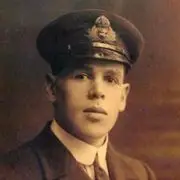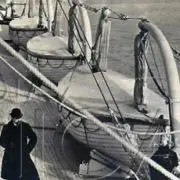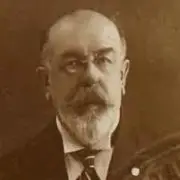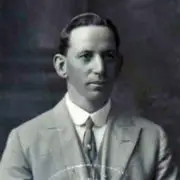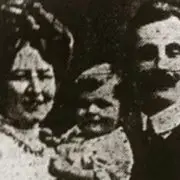The Lusitania : Part 4 : The Families
Only a handful of the Lusitania’s families, and we are expanding the term ‘families’ to include mothers traveling with children, survived intact. Most did not survive at all.
by Jim Kalafus, Michael Poirier, Cliff Barry and Peter Kelly
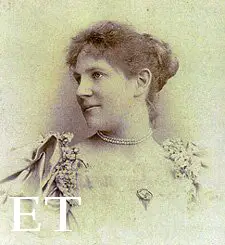 |
| Cecelia Owens. Courtesy of Carol Keeler |
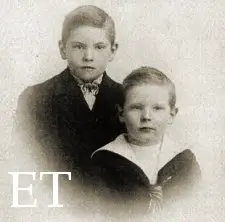 |
| Ronald and Reginald Owens. Courtesy of Carol Keeler |
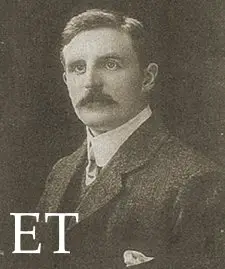 |
| Alfred Smith. Courtesy of Carol Keeler |
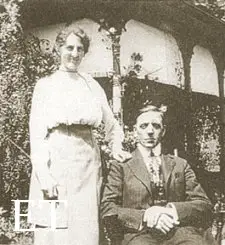 |
| Cecelia and Hubert Owens. Courtesy of Carol Keeler |
Terrible as certain aspects of Emily Anderson’s story were, she was actually among the more fortunate of the Lusitania mothers. Her daughter survived, she found a place in a lifeboat, and she lost no one that day. Only a handful of the Lusitania’s families, and we are expanding the term ‘families’ to include mothers traveling with children, survived intact. Most did not survive at all. Circumstances that day worked against children, and against easy evacuation of entire families. No war zone precautions were in effect among the passengers. It was not suggested that families stick together, and children were allowed to move about the ship at will. Lunch was in the process of breaking up when the torpedo struck. People had dispersed to enjoy the final beautiful afternoon at sea, and a common thread among the accounts left by parents who survived was the horror of trying to find children, who could have been anywhere, during the liner’s final 18 minutes.
Cecelia “Cissie” Owens, of Ellwood City, Pennsylvania, boarded the Lusitania on May 1, 1915, with her sons Reginald, 10, and Ronald, 6, her brother Alfred Smith, sister-in-law Elizabeth Jones Smith, and niece Helen. The Smiths’ infant is commonly refered to as Elizabeth “Bessie” Smith, but Helen Smith recalled that the baby was a boy named Hubert, and the family monument is inscribed as such. The extended Smith family had immigrated piecemeal to the United States from Swansea, Wales, over the prior ten years. They settled first in Yonkers, New York, and later in the Pittsburgh, Pennsylvania area. That May, two branches of the family were returning to the United Kingdom. It was said that the Alfred Smith family had grown disillusioned with American life and were permanently resettling in Wales. Newspaper articles claimed that Cecelia Owens and her sons were simply returning to her ancestral home for a visit.
The afternoon of May 7th found Cecelia minding the Smiths’ infant in her cabin, while Reginald and Ronald Owens played on deck with their cousin Helen. Shortly after two, the boys appeared at the door to request an extension of their play time. Cecelia would later recall their last words as being
She granted them permission for another half hour on deck.
Cecelia interpreted the initial blast as being the ship running aground or perhaps striking a rock, but there was no mistaking the second stronger explosion for anything other than what it was. Joining a crowd of ‘scampering’ passengers, and carrying Hubert Smith, she climbed upward to the open second class decks hoping to find her sons. She encountered, instead, her brother and sister-in-law, who were searching for their missing daughters. Cecelia returned Hubert to them, and then the Smith family and Mrs. Owens parted, each setting off separately to find the missing children.
Cecelia moved around the deck calling for her boys and Helen. A stranger stopped her and affixed a lifebelt at some point, and after that Mrs. Owens was tossed into a lifeboat. It capsized, and she was thrown into the ocean along with the other occupants. Cecelia swam with two men to a swamped collapsible, from which a fishing trawler rescued her some hours later.
Reginald and Ronald Owens died in the disaster, as did Alfred and Elizabeth Smith and their infant. None of the bodies were ever recovered or, if recovered, identified. Cecelia’s only consolation came when she was reunited with Helen Smith at her hotel in Queenstown. Helen saw her at a distance and called out “Why, here is auntie!”
Mrs. Owens traveled on to Swansea, where she was described as being in a very nervous, shocked state. She composed a letter to Arthur Smith, back in Yonkers, in which she said:
I will try and write a few words to ease your mind & my own. You know of my dreadful trouble. I am thankful to God I am alive & no limbs are broken.
My darlings are gone, also dear Alf Bessie, Baby. Helen & myself left…I swam for my life & was picked up by some fellow pulling me on a collapsable boat (I can’t spell today).
I had a terrible experience. I am thankful I have my mind also limbs which are bruised all over. I am under a doctor’s care and feel better than I did, but oh my heart aches & will always.
My dear boys were with me five minutes before it happened but I never saw them again……
Oh Arthur this is a dreadful blow. Everything I possess is gone and my darlings as well. Also our dear Alf and his lot……I am trying to be brave. God will still give me strength to overcome this as he saved me for some purpose.
Your broken hearted sister. CE
How must dear Hubert feel? I have not heard yet. Only cablegrams.
There was one additional sorrowful burden for Cecelia. Her older son had not wanted to make the trip. He wished to remain with his father in Pennsylvania, but had been compelled to go.
 |
| A page from the Helen Smith scrapbook kept by the Arthur Smith family of New York, showing the most widely reprinted photo of Helen. |
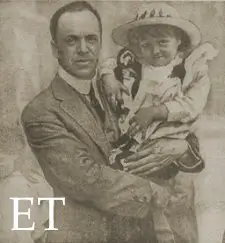 |
| Helen Smith and Ernest Cowper |
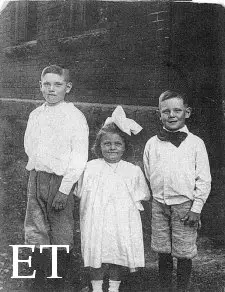 |
| Helen Smith and The Owens Brothers. Courtesy of Carol Keeler |
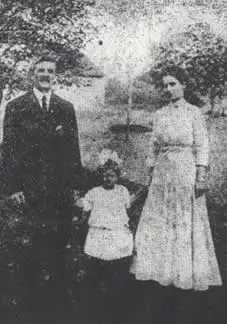 |
| Smith family |
Helen Smith; Alfred and Elizabeth Smith
The photograph of Cecelia Owens’ niece, Helen Smith, 6, wearing her white hat and holding her doll remains one of the most frequently reprinted, and best known, of the Lusitania disaster images. In its day, the photo charmed royalty, and induced a substantial number of adoption attempts in the weeks following its initial publication: 90 years later it retains much of its original power to charm, and elicit sympathy for the young orphan.
Alfred and Elizabeth Smith likely remained aboard the Lusitania to the last. It is reasonable to assume that, after parting company with Cecelia Owens, they continued to search for their missing daughter until time, and escape options, ran out. They died not knowing that Helen had been rescued, with relative ease, in one of only six lifeboats successfully lowered.
It is difficult to imagine what Helen Smith must have experienced that afternoon. Alone on deck, awaiting the return of her cousins, she would have heard, and possibly seen, the explosions forward on the starboard side. She would have felt the ship beginning its first roll to starboard, and may have witnessed the first lifeboat to upend and eject its passengers. She would definitely have seen the waves of passengers coming up from below. What she did not see in the mass of people, was any sign of her parents or extended family. Fate interceded, and Helen’s life was saved by the appearance of Toronto newsman Ernest Cowper:
I was chatting with a friend at the rail about two o’clock…we both saw the track of a torpedo, followed almost instantly by an explosion. Portions of splintered hull were sent flying into the air… A little girl, whose name I later learned was Helen Smith, and whose age is only six, had become separated from her parents in the rush and appealed to me to save her. I put her into a lifeboat and looked for her parents but could not find them. Whether they were saved or not I do not know.
Survivor Elizabeth Hampshire recalled being with Helen in the lifeboat.
I had a little girl on my knee in the lifeboat. She told me she was called Helen Smith.
As they waited for rescue, Helen turned to Elizabeth and her foster sister, Florence Whitehead, and said,
If I can’t find my Mamma and Daddy, I’ll go with you ladies.
It seems that Ernest Cowper served as Helen’s unofficial guardian in Queenstown. A photograph of him holding the child was printed in dozens of newspapers. He was mentioned, and quoted, frequently in newspaper columns and through him it is possible to document much of Helen’s immediate post-sinking experience:
Ernest S. Cowper, a Toronto journalist who saved Helen Smith…said that he had given her up in Queenstown to a well-dressed woman whom asserted that she was the child’s aunt:
“I think that it was just simply a wealthy woman who read the story and wanted to adopt her,” he added, “because later I had twenty two offers in Liverpool through the Cunard Line, from people wanting to take Helen Smith. Before I left London I received a letter from Queen Dowager Alexandra, asking me to take her to Sandringham, but I could not go as I did not know where the child was, and my wardrobe was not exactly fit for making calls on Queens living in royal palaces.”
Although the Royal Invitation story seems to be a newspaper fabrication at first glance, a letter from Queen Dowager Alexandra inquiring about Helen survives in the Smith file in the Cunard Archive.
There was at least one Helen Smith newsreel produced during the week after the sinking.
Helen was claimed by her uncle, Captain Smith, and returned with him to Swansea. There she was allowed to fade from the limelight and lead as normal a life as possible under the circumstances. A clipping from the 1920s quoted Ernest Cowper as saying that he kept in touch with Miss Smith and that he was proud that she had received an award for academic excellence.
A bizarre footnote to Helen’s tale appeared in the early 1930s. A female “Lusitania orphan” close in age to Helen, had been murdered and cemented under a garden pool by her adoptive father, who committed suicide by jumping from a ferry the day the bodies of the girl and her mother were uncovered. Whether the girl truly was a Lusitania orphan as early press accounts claimed, and what her true identity was, remains to be discovered. However, it can be said with assurance that she was not Helen Smith. Helen had married John Henry Thomas, a wholesale department manager, in Swansea in late 1931. They had at least one child, a daughter, and continued to live in peace and comfortable obscurity for the remainder of their lives. She kept in contact with friends in Ellwood City well into the 1940s. She was interviewed by Hickey and Smith (credited as Helen Thomas) for their book, and survived more than a decade beyond its publication, dying in Swansea, where she had been born in October 1908, on April 8, 1993.
Frederick Warren Pearl; Amy Pearl and children
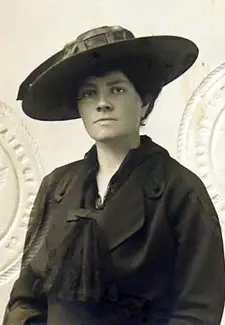
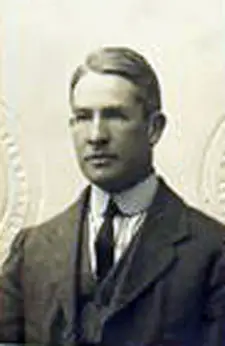
Amy Pearl, Frederick Pearl
Surgeon Major Frederick Warren Pearl embarked on the Lusitania’s fatal voyage with his wife, Amy, four children: Stuart, Susan, Amy, and Audrey. Two servants, Alice Lines and Greta Lorensen were traveling with them were. The Pearl party was more fortunate than most, although two of the children, Susan and Amy, and one of the servants, Greta Loresen, were lost. Major Pearl’s checklist-style deposition, although spare, captures the horror facing separated families during the final eighteen minutes.
- About 2 p.m. went below deck sixteen feet above water.
- Quarter hour later heard explosion on opposite, or starboard, side
- Flames smoke and glass in stateroom
- Wife on deck at time saw torpedo coming from starboard, which hit about 8 seconds later.
- Wife went below
- Put on life belts excellent sustaining power, deck crowded no panic.
- From wake it appeared ship had made a semicircle to port since hit.
- Nurse, stewardess and three children separated from wife and one child.
- Ship now listed to starboard
- Searching for nurse and children, I found two boats lowered starboard and third suspended perpendicularly while women were being put in fourth.
- Still no confusion.
- Back to wife.
- Word came lower no more boats, everything alright, aid coming.
- Made second tour for children vainly.
- Ship now on fairly even keel.
- Boat filled with people crashed inward falling on other people on deck.
- Ship suddenly made a forward plunge to starboard, water rushing in over forecastle head and deck.
- Third search for children vain.
- Back with two planks for wife, nurse and child when sea came rushing aft throwing everyone on deck into sea as ship plunged beneath.
- Pulled down five or six times by suction
- After three hours in water was picked up by a collapsible boat in which discipline excellent.
- Picked up 35 in all.
- About one hour later taken off by steam trawler which rescued many others, reaching Queenstown about six hours after sinking of the ship.
- Wife had been pulled on to an overturned boat with about fifty people.
Major Pearl died on January 2, 1952, at age 83 in London, England. His wife, Amy also died at age 83, on February 1, 1964. Their son, Stuart, 5 in 1915, outlived his mother by little more than a month, dying in Arizona at age 54, on March 13, 1964. The Pearl’s infant daughter, Audrey, is one of two known survivors still alive as of 2008.
Paul and Gladys Crompton, and children
One of the most tragic stories of the Lusitania disaster was that of Paul Crompton, his wife Gladys, their six children and nursemaid Dorothy Allen. The Cromptons were perhaps the most widely traveled family aboard the liner: Mr. Crompton’s business had taken to points as far removed from their native United Kingdom as Vladivostok, Russia, and Brazil. They had spent nearly a decade living in Chestnut Hill, Pennsylvania. Their governess was an ambitious college graduate from a well-to-do American family. None survived.
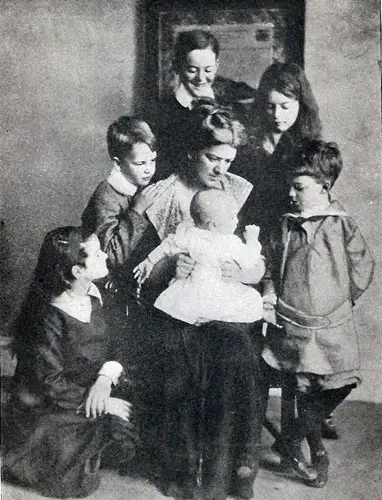
Gladys Crompton and Family
Paul Crompton was born on August 20th 1871, one of two sons born to Barrister Henry Crompton, and his wife Lucy Henrietta Romelly. Paul and his younger brother, Davis, spent their childhoods at Churt House, Frensham, Surrey. Both were fluent in French and German, having been taught by their governess. Henry Crompton eventually became the Clerk of Assizes on the North Wales Circuit. The family continued to reside in Frensham.
Paul Crompton’s wife, Gladys Mary Salis Schwabe, was born on February 3rd 1878 at Cumbersall House, Lancaster, daughter of George Salis Schwabe, Major of the 16th Lancers, and his wife, Mary Jacqueline James. Gladys’s travels began almost at birth: as the daughter of an army officer, she and her mother and siblings followed Major Schwabe to various posts across the United Kingdom. By 1898 Schwabe had been appointed Major General of the Royal Hospital Chelsea; home of the famous Chelsea pensioners.
It was while in London that Gladys Mary met and became engaged to Paul Crompton – by then a successful merchant. They were married at St Luke’s Church Chelsea on October 24th, 1900. The couple moved into Paul’s home in Mecklenburg Square, Clerkenwell after their honeymoon.
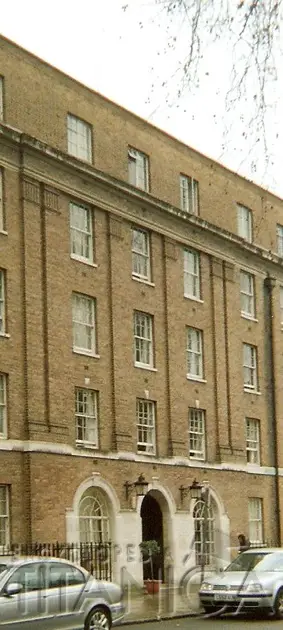
The Crompton’s Home at Mecklenburg Square
Courtesy of Cliff Barry
The Cromptons spent a great deal of time in the Far East during the first years of their marriage. Paul learned to speak Chinese during their time in China. In 1902 while in Vladivostok, Eastern Russia, their first child Stephen was born. Their daughter, Alberta, was born in New York during the return leg of a trip to Brazil. By 1905, the family had expanded to include Catherine Mary, who had been born in London, while the family, who were living in China, had come home for a family funeral.
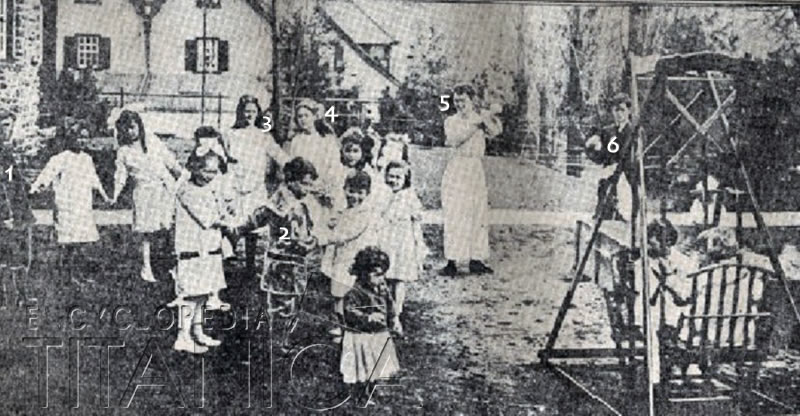
1. Peter Crompton, 2. John Crompton, 3. Alberta Crompton, 4. Catherine Crompton, 5. Dorothy Allen, 6. Stephen Crompton
Courtesy of Cliff Barry
The Crompton family settled in Philadelphia, where Paul worked as Vice President of the Surpass Leather Company. He was based in the company offices at 901 West Moreland. The Surpass Leather Company manufactured most of America’s kid leather, and had a virtual monopoly on patent leather. The president of the company was Charles Booth, who offered Paul a directorship with Booth Steamship Company.
The family continued to grow, with Paul Romilly born in 1906, and John in 1909. Chestnut Hill, on the outskirts of Philadelphia, seemed the ideal place for the children to grow up. Paul Crompton became a member of the Philadelphia cricket club. His brother, David, lived with the family and was based in the New York office of the Surpass Leather Company, and served as the company treasurer. Gladys Crompton engaged the services of a young Mount Holyoke graduate, Dorothy Allen, to provide games and activities for the children in early 1913. Dorothy left her position with the Crompton family a year later, but soon returned to serve as governess.
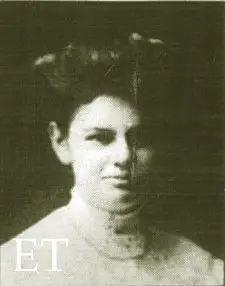
Dorothy Allen
Courtesy of Mount Holyoke College Archives and Special Collections
Gladys gave birth to her last child, David, in 1914. Less is recalled about Mrs. Crompton than of her husband. Her life seems to have been similar to that of any well to do mother of her era. She maintained affection for the Orient, and after her death one of the reported ’human interest’ details about Mrs. Crompton was that she was well known for shopping at the Chinese department of Wanamaker’s department store.
Business continued to take Paul Crompton back and forth the Atlantic, and on nearly every occasion his wife and children accompanied him. They usually traveled aboard the Lusitania. It became apparent to Mr. Crompton, by early 1915, that his financial interests in England made it imperative that he reside there. It was later said that the Booth Steamship Company had made him a handsome offer, the specifics of which possibly required the move.
Crompton initially took passage for himself and his family on a Dutch steamer, but because it did not provide direct passage to England, he cancelled the booking. He then booked passage on the Lusitania. The family intended on taking up residence at 29 Gilston Road, Kensington, Middlesex, upon arrival in the United Kingdom.
The family traveled up from Philadelphia accompanied by Hollister Sturges, a business associate, who waved them off after the gangplank had been withdrawn. They were allocated cabins on the Upper Deck, D58/60/62/64, which were located by the main entrance to the first class dining saloon, on the port side. It may have been this young boisterous family that had caused Theodate Pope, in cabin D54, to seek a quieter cabin on A Deck She later wrote of a noisy family who made her stay in D-54 unpleasant. Mr. and Mrs. Crompton would dine in the first class saloon, while the children ate in their own dining room on C Deck. It was later said that, during the voyage, Paul Crompton had received a cable from Alfred Booth telling him to disembark at Queenstown and proceed directly to London.
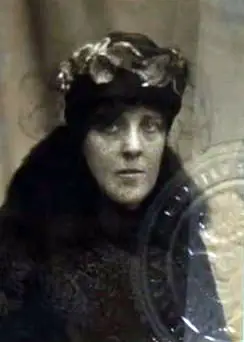
Theodate Pope
There were only two recorded sightings of the Cromptons on the day of the disaster. The Reverend Cowley Clarke said:
Whole families have been lost. One American family, Mr. and Mrs. Paul Crompton, Philadelphia father and mother, and six children, down to a baby of eight months, were lost. I tried to find one of the children, but it was absolutely hopeless to find anybody.
Samuel Knox, of Philadelphia, remembered seeing the family and recorded:

Paul Crompton
I saw Paul Crompton, of Chestnut Hill, with four belts for his little children. He was trying to fasten a belt around the smallest, a mere baby. One of his older daughters, a girl of around 12, [possibly Alberta] was having trouble with the belt she was trying to put on herself. ‘Please will you show me how to fix this?’ she asked unconcerned. I adjusted it, and she thanked me.
Immediately after the disaster Charles Booth cabled Hollister Sturges in Philadelphia for any news of the Cromptons, but to no avail. It quickly became apparent that none from the large party had survived, and a photo of Mrs. Crompton and her children was released to the press and became an iconic image in the Lusitania story, and an effective piece of wordless propaganda.
The funeral cortege for the body of Stephen Crompton, identified as body 134, left the Cunard Offices in Queenstown, at 11 o’clock on May 13th, for the old church graveyard. The Chairman and Town Clerk of Queenstown, and town official representatives were in attendance. A number of prominent Queenstown residents were also present. The body was interred in a private grave large enough to hold the entire family should it be needed. The bodies of 6 year old John, # 192, and 9 month old Peter, # 214, were buried on May 16th. The remains of the rest of the family, if found, were never identified and the grave was closed.
David Crompton, who was in Philadelphia at the time that the Paul Crompton branch of the family was eradicated, closed the house in Chestnut Hill and let the servants go. He then returned to London. Probate was awarded to Paul Crompton’s mother and brother as none of the direct family had survived. Paul Crompton’s estate was valued at £30, 158, 5s, 9d; net it was worth £28, 709, 1s, 7d. Neither the Crompton nor Schwabe families made application for compensation after the war.
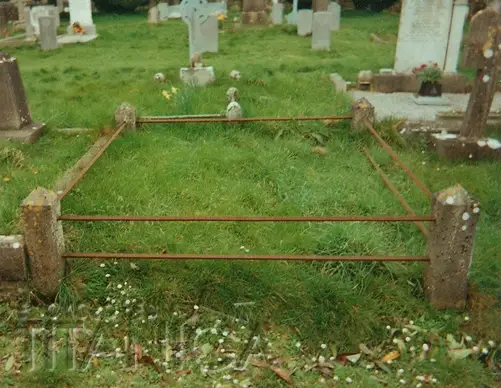
The Crompton’s Grave
Courtesy of Cliff barry
Today row 15, grave number 12 marks the final resting place of the three young Crompton brothers. No headstone exists but metal railings surround the grave, slowly rusting away. The final picture taken of Gladys Crompton and her six children was publicised worldwide to highlight the horrors of the German atrocity; a purpose for which the image is used to this day. Perhaps it is a fitting tribute to such a young family cut down in their prime.
Dorothy Ditman Allen remains best remembered as a footnote in the tragic tale of the Crompton family. Dorothy was the middle daughter of Dr. Richard Allen of Frankford, Philadelphia, Pennsylvania. The Allen sisters were afforded “rare educational advantages,” with two becoming teachers upon graduation from college and the third, Dorothy, becoming a governess to the Crompton children in 1913, after her graduation from Mount Holyoke. The ‘acting bug’ may have bitten Dorothy, for she appeared in at least one college production.
Miss Allen was lost, and very little detail survives regarding her final seven days. She was seen to be crying on sailing day, which is often attributed to the behavior of her charges. However, she had worked for the Cromptons for two years at that point and was, presumably, used to the childrens’ high spirits. It is more likely that her tears were induced by some other factor; fear of the German warning, and of a wartime crossing, perhaps? No one who survived recalled seeing Miss Allen. Three of the Crompton children were recovered and buried in Queenstown, but Dorothy Allen was never found. Her family sent the consulate a description in hopes of identifying her body. They said she was “five feet, blue eyes, stub nose, twenty six years old.”
Dorothy had helped to support her widowed mother, Hettie, with an annual contribution of approximately $300.00. She had spent her free hours helping her sisters to maintain Hettie Allen’s house. In 1924 the U.S. Mixed Claims Commission awarded Mrs. Allen $7500.00 for Dorothy’s loss, plus a second sum of $1267.00 to be awarded to her as Administratrix of Dorothy’s estate.
More fortunate than Dorothy Allen was Gladys Crompton’s maid, Jenny Murphy. Miss Murphy gave notice before the voyage that she was resigning from her job, after six years, to marry Patrick Gallagher, an estate gardener. They wed shortly after the Cromptons left Philadelphia. She declined to comment about the Cromptons in public after their deaths, saying that it would seem out of place.
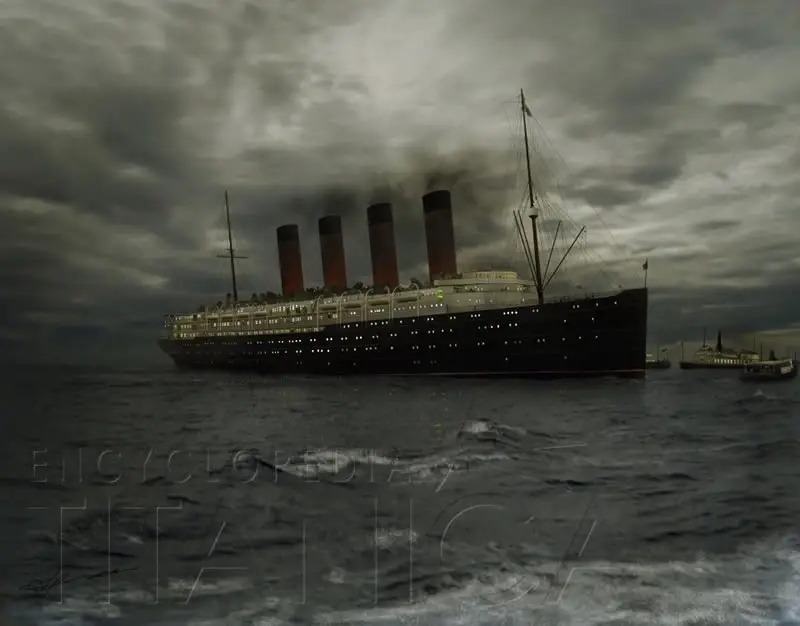
Image courtesy of Harald Advokaat
Charlotte Pye was a young mother from Edmonton, Alberta, Canada, traveling in second class with her infant daughter, Marjorie. Her husband, William, remained behind to tend to the family tailoring business, the Pan-Co-Vesta Pantorium, while his wife paid an extended visit to her parents in the United Kingdom. It was to him that Charlotte sent a graphic account of the disaster a few days after her safe arrival in London:
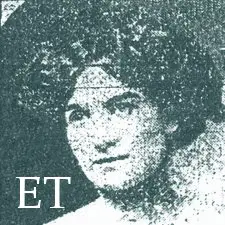
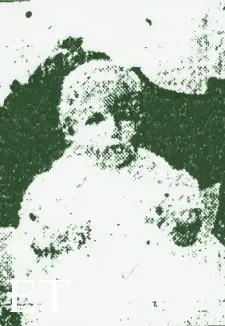
Charlotte Pye and Marjorie Pye
Courtesy of Kevin Spaans
I scarcely know how to begin this letter, so much have I gone through since I parted from you…we were sitting at luncheon when the torpedo struck us. A few minutes earlier I had been talking with a woman who sat opposite me, and I told her I intended upon staying on deck all night as we were in the danger zone and I feared something might happen. ‘They daren’t do any such thing’ (meaning the Huns) and then the crash came. Everybody stood up, and my friend shouted ‘She’s going down!’
I picked up Marjorie and ran on deck. The ship had listed to starboard and the decks were slanting so much that it was almost impossible to walk on them. My head was banged several times, but I still managed to hold on to Marjorie… I saw the poor women running up and down…I did not have a lifebelt, but a gentleman took off his and strapped it around myself and the baby. When my turn came to get into a boat, Marjorie was taken away and handed in first, and I followed. Barely had I got into the boat and taken the baby into my arms when I looked up and saw the big ship coming right over on us, with people jumping for their lives. Then our boat suddenly keeled over and we found ourselves in the water. Marjorie gave one piercing scream and we both went down together. The suction underneath the water dragged her out of my arms and she was gone forever. I shall never forget the agony of it: while I was under the water I felt my end had come.
Charlotte rose to the surface only to be dragged under a second time, losing consciousness. She awoke in a field of debris, and clung to wreckage until three men pulled her atop an upturned lifeboat.
On one side of the boat a lady was lying dead, and all around us in the water were the dead bodies of people who only a few hours before had been bright and happy.
Mrs. Pye was rescued by the vessel Flying Fish and brought with the others into Queenstown. She traveled on to England. Searchers in Queenstown eventually found Marjorie’s body, which was buried in Private Grave #5, row 17, with the body of an unidentified 12 to 18 month old female sharing her coffin. Charlotte coped with her loss by throwing herself into the War Effort, appearing as a speaker at several recruitment rallies: a film of one of these appearances has survived. She wrote a letter to the mother of victim Richard Preston Prichard, months after the disaster, in which she spoke of how tight she had held her daughter under water, not relaxing her grip until she lost consciousness, and of how her life no longer seemed to have any meaning with Marjorie dead.
Charlotte Pye Bergen was awarded the sum of $3265.00, in the Canadian courts, for her injuries and losses aboard the Lusitania, in 1926.
Late in her life, as Charlotte Kelly, she granted an extended audio interview during the course of which she related her Lusitania experiences. She died in Vancouver on January 18, 1971, at the age of 84.
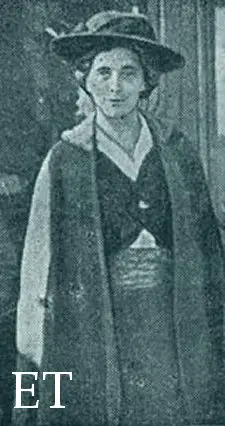 |
| Gertrude Adams Daily Sketch Jim Kalafus Collection |
 |
| Joan Adams Mike Poirier Collection |
Gertrude Adams’ experience paralleled that of Charlotte Pye. Mrs. Adams, a second class passenger returning to Bristol, England after a stay in Canada, was in the dining saloon with her two and a half year old daughter, Joan, when the explosion came. She described it as a “dull boom” and a “slight tremble” and told of how, as the passengers started for the doors, a crewman tried to calm them by speculating that perhaps they had run aground.
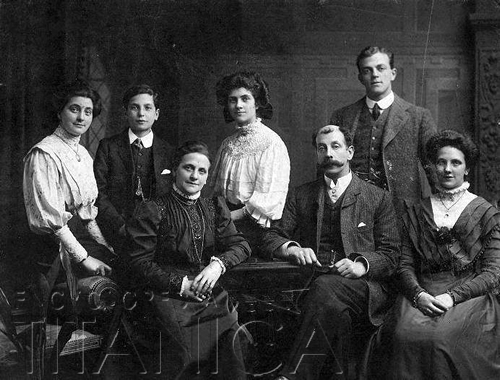
Gertrude Adams (seated centre at back) in 1910
(Courtesy of Roger Pollett)
Mrs. Adams made her way to the boat deck, and from there followed a group of passengers obeying a “women and children this way” order to the Promenade deck. Mr. Basil Wickings-Smith gave her his lifebelt when he saw that she had none. Gertrude witnessed another young mother and child hurled down the sloping deck, as the ship listed, landing against a flight of steps. Shortly thereafter the Lusitaniasank and both Mrs. Adams and Joan were pulled down with her. Mother and daughter came to the surface together, and Gertrude swam to a piece of wreckage upon which she placed her daughter.
But I could not help her more than hold here there.
The water, although not as quickly fatal to those immersed in it, as was the water into which the Titanic victims were plunged, was dangerously cold and Joan soon began to fade.
Then, I had to watch her die. A young fellow near offered to take her while I tried to reach a tank that was floating a little way off, but my baby had passed away then and I felt I must kiss her goodbye.
Mrs. Adams, the young man and several other people clung to the tank in the numbing water for hours.
One of the men later capsized the tank and I and the others were again in the water. It was twenty-five minutes after of two when I first entered the water and I was picked up at ten minutes of six. A boat took us to a trawler, and by that time I was delirious, awakening to find myself in a bunk of the trawler with the recollection of what seemed like a horrible dream in my mind.
Robert Henry Duncan confirmed part of Mrs. Adams’ storybefore Lord Mersey:
A: A Mrs. Adams of Bristol, I found out…There was another lady and gentleman on the tank, but the gentleman died from exposure and the lady got hysterical and we lost her too.
Mrs. Adams was taken to Queenstown, and from there journeyed on to her mother’s home in Bristol. She was joined there by her husband, a stretcher bearer with the 4th Battalion, Central Ontario Regiment. She would later write to the mother of victim Richard Preston Prichard that at least she, Gertrude, had the small comfort of knowing her child’s fate, unlike so many other Lusitania parents who were forever left to wonder.
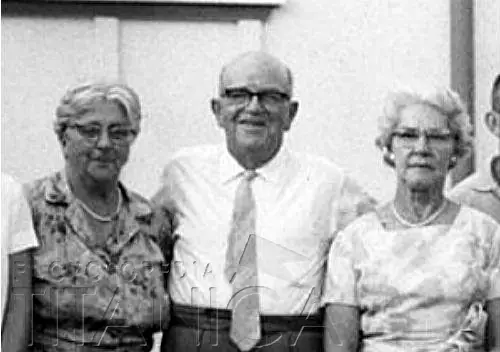
Gertrude Adams in Australia in the 1960s
(Courtesy of Roger Pollett)
Gertrude Adams’ Account
Some months after my husband went with the Canadian forces to the war, I left our home in Edmonton, Alberta, to visit my parents in Bristol, England. I wanted to sail on the biggest boat which made the run, and I had many pretty clothes for myself and my baby.
The war was still remote to me. When I stood at the wharf with my bags, a stranger said to me “Don’t you know there is a war on? It is not safe to sail!” But, I had no doubts about my safety. When the ship was camouflaged, I did have a moment of worry, but not for long, and as we neared home I worried less.
We had just finished lunch in the second saloon when the explosion came. There was a violent explosion, furniture crashed about the saloon, and women screamed. I grabbed my baby. I remember a young woman who put out her hand to help me as I struggled with my baby up the stairs. I reached the deck and found a boat covered with canvas, and a man standing by it. The sweat was running down his face, and he was saying that he could not get the canvas off by himself. “I can do nothing for you, missus’ he said. The ship tipped right over to one side, but I hung on to the boat and sat my baby on the canvas cover. She did not cry.
Someone called to me to follow, and I took my baby off the boat and ran with a man and another woman with a baby to the first class deck. Nobody told me where to go to get a boat, but I remember picking up a traveling rug someone had dropped and thinking I would need it for my baby- later.
The woman with the baby fell down on deck, and rolled, and a wave took her and the child. The man asked a steward to get me a lifebelt, but the steward replied “She will have to get her own.” The man took off his belt and gave it to me, and the next minute he was gone down the deck himself. He came from somewhere near London- Blackheath, I think. He left a wife and a little girl.
Then I went down the deck and I was washed overboard. I held on to my baby and I seemed to go down, down to the bottom of the ocean. When I came up, I still had the baby, but had lost the rug. I found a board floating in the water, and I put my baby on it. I floated there with hundreds of people all around me….there was no way of getting to the boats, and they were all overcrowded anyway. Then I saw that my baby was dead, and I let her go, and slipped back into the water. I felt there was no use struggling anymore, but three seamen on a tank reached out to me. One man was balancing the tank, and the rest of us clung to the edge. I heard them arguing as to whether I was dead or alive, but they held me up.
I remember seeing a barrel floating, and thinking “If only I could get to that barrel, if only I could” but, of course, it was quite impossible. I had thick plaits of hair, and felt that my hair was holding me down in the water. I do not remember anything much until we were picked up by a boat from the coastal steamer Bluebell.
Well, everything was lost, except my husband. He secured a special permit and came from the front line to spend four days with me in Bristol, and saved me from going mad.
Gertrude Adams had three children after the war, and emigrated to live in Hurstville, Australia. She died there, on December 20, 1981, at the age of 91.
Sarah Rose Lohden, of Balmy Beach, Toronto survived the disaster, as did her eleven year old daughter, Elsie:
All during the voyage we were all talking of submarines. It seemed people could do nothing but discuss the possibility of attack. I had a presentiment we would be struck. I could not sleep night after night, but walked the decks, thinking what must happen.
On Friday, immediately after a meal I was on the promenade deck with my daughter. Looking over the deck I saw the periscope of a submarine…
A big explosion followed. It was then ten minutes past two. There was a scene of great confusion. Many boats failed to get off.
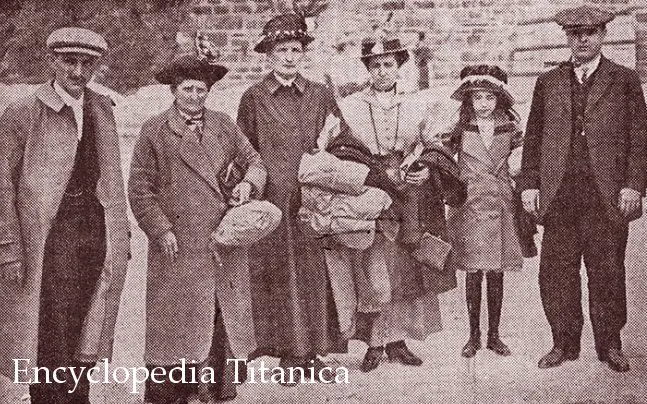
Survivors photographed at Queenstown
Left to right: Mr. Collis, Mrs. Wolfenden, Mrs. Plank, the Lohdens, Mr. Milford.
A young Spaniard, Vincente Egana of Bilbao, showed great gallantry. He saw Elsie and myself into the last boat that left, then went back and brought other women and children.
The scene as the ship sank was terrible. The whole surface of the water seemed covered with floating articles, particularly deck chairs, among which multitudes of struggling people fought for life. As the ship heeled over, a funnel came almost on top of us, brushing by me. We were caught in the wireless rigging, but finally got free. We were four and a half hours in the open sea before our boat was rescued with about twenty men and women, and two children.
The most moving case I witnessed was Mrs. Adams; I believe the wife of a soldier. She had a two year old baby. She fell into the sea clasping it; caught a steamer chair; put the baby on it and held it there, she floating by its side.
As we drew near we saw the baby was already dead from drowning and exposure. We went to pull her in to the boat. “Let me bury my dead child first” she whispered. She let the babe sink as we dragged her in.
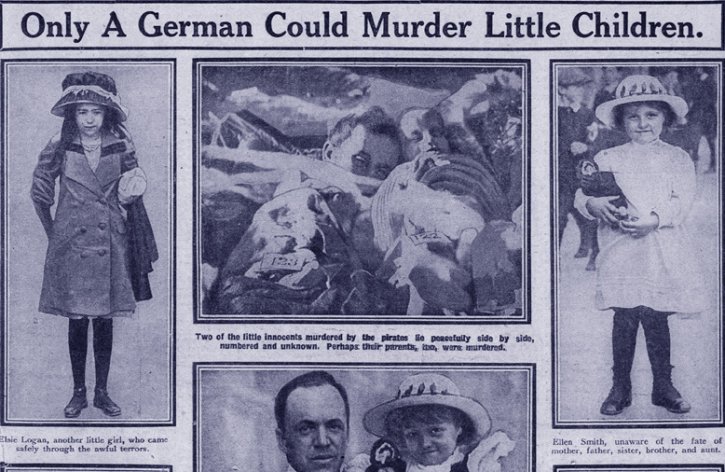
How the U.K. and much of the U.S. viewed the disaster.
Under the headline are shown (left to right) child survivor Elsie Lohden; a photo taken at one of the morgues in Queenstown showing the remains of waiter Charles Gilroy, infant Sheila Ferrier (on Gilroy’s chest) and infant Walter Dawson Mitchell Jr, and the omnipresent photo of Helen Smith. In the cases of Sheila Ferrier and Walter Dawson Mitchell, the children were survived by a mother widowed by the sinking.
Copyright The Daily Sketch. Jim Kalafus collection.
Sarah Lohden Pinden died on October 20, 1932, in Toronto, Canada. Rose Lohden Green died in Peterborough, Canada, on November 24, 1987.
A police report discovered by Peter Kelly details a story as grim as those of Mrs. Pye and Mrs. Adams. Four bodies were recovered along the south coast of Ireland, and upon being brought ashore were examined and photographed. Three proved to members of one family: Mrs. Emily Palmer, and her sons Edgar (an infant) and Albert. The report is full of minute details and one horrible one. Mrs. Palmer stood 5’2”, had light blue eyes and an oval face, and died wearing a blue corded skirt and brown tweed jacket. Her 7 year old son also had blue eyes, and wore a Lusitania souvenir badge. Mrs. Palmer had time to “attach” her infant to her body while still aboard the ship. When all three were recovered, they were lodged beneath an overturned lifeboat found drifting off Baltimore, Ireland. A notation found elsewhere indicates that his grandmother identified the boy’s body, using the photograph that remains with the report. Emily’s husband, Mr. Albert Palmer, and their four year old daughter, Olive, were never found.
“Those dirty hounds murdered my wife and her unborn babe. They may get me, but I will wipe out my score first.”
So said Constable William Smith of Hamilton, Ontario, as he resigned from his job and enlisted, on May 13th, 1915. His wife, Minnie, had been a third class passenger aboard the Lusitania, and by May 12th there was no chance that she and her unborn child would be found alive.
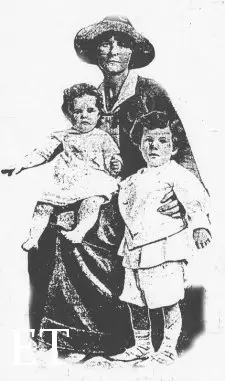
Norah Bretherton and family
Courtesy of Paul Latimer
A fairly large number of pregnant women boarded the Lusitania on May 1st. Florence Padley and Gertrude Wakefield were both within days of giving birth, and would each deliver a healthy son soon after reaching shore. Margaret Kay was also days away from giving birth, but reached the boat deck just in time to be washed overboard as the ship sank, and was never seen again. Emily Anderson and Norah Bretherton each survived to give birth to sons in the fall of 1915. The child that Amy Pearl was carrying when she sank with the ship was born late in the year. Annie Elliot lost her husband, Arthur, on May 7th, but carried their unborn child full term.
Nina Holland gave birth to a daughter, Eileen, in September. Catherine Henry gave birth to a healthy son in the fall of 1915, who she named Michael Lusitania Henry. And the luckless Minnie Smith? A unidentified body, buried in the Old Church burial ground at Queenstown, was described as such:
186. Female. 32 years, pregnant, stout strong build, fair complexion, round face, good looking; long light brown wavy hair; height 5’9”.
Wore blue serge dress with red jersey underneath jacket, blue check bodice, black button boots, cashmere hose.
Property. Gold wedding ring and keeper rings.
William Sterling Hodges, of Philadelphia, was one of several passengers on the fatal voyage to have crossed on the Lusitania’s final completed trip, which commenced in Liverpool on April 17th 1915, and ended in New York on the 25th.
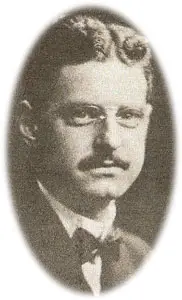
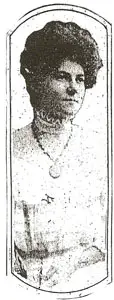
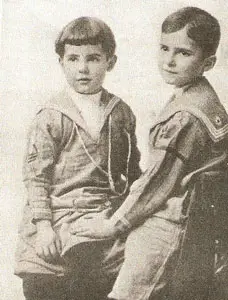
William Sterling Hodges, Sara Hodges and the Hodges Boys
Mr. Hodges, 36, had been in the employment of the Baldwin Locomotive Works, Philadelphia, Pennsylvania, for 16 years in May 1915. He first worked as a draftsman for the company, then in sales, finally becoming a mechanical engineer. He represented his company in China and Russia. In community life, he was the organist at Harper Memorial Presbyterian Church in Philadelphia, where his family resided at 2936 West Lehigh Avenue.
Hodges had been appointed manager of his company’s Paris offices, in which capacity he made at least two transatlantic crossings. One odd note: William Sterling Hodges appears on a December 1914 Orduna passenger list, the next passengers upon which sequentially are the Mrs. Mary Hoy and her daughter, Elizabeth, whose deaths aboard the Laconia in 1917 finally propelled the U.S. into World War I.
Mr. Hodges was to take charge of the Baldwin office in Paris, where he would sell locomotives to the French government and supervise the assembling of engines sent to France in pieces. He had set up a household in Paris; his trip to New York was to be a fast turnaround, for the sole purpose of shepherding his family to Europe.
He had an important sales meeting in Paris on the May 10th,and subsequently had only five days to spend in the United States. Passports were applied for and given to Mrs. Hodges and her two sons on April 27th. The day before he sailed with his wife, Sara, 32, and two sons, William Sterling, 7, and Dean Winston, 4, Mr. Hodges signed a new will appointing Sara his heir. The will also contained the ominous note that should they “all die simultaneously or on or about the same time” his estate, consisting principally of an $11,000 insurance policy, would go entirely to his mother.
The family boarded the Lusitania and was assigned cabins A16/18. It is known that they spent time during the crossing with Mr. Harry Keser and his wife Mary. It was rumored, but never confirmed, that Keser, who was Vice President of the Philadelphia National Bank, was engaged in business with Mr. Hodges’ firm.
One account of the sinking briefly mentions an encounter between Mrs. Maud Thompson, survivor, and the Hodges family in the crowd climbing the stairs to the boat deck. Another states that Mr. Hodges was later seen exiting his portside A Deck cabin with lifebelts in his arms.
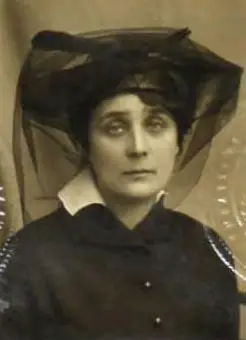
Maud Thompson
Initial reports stated that 4 year old Dean Hodges was the sole survivor of the family. His uncle told the Philadelphia Enquirer that he intended to stand by the boy and raise him, but the rumors proved to be false and his body, like that of his father, was never recovered. There were photographs of Mr. Hodges and his sons in The New York Times, Sunday, May 8, 1915 edition.
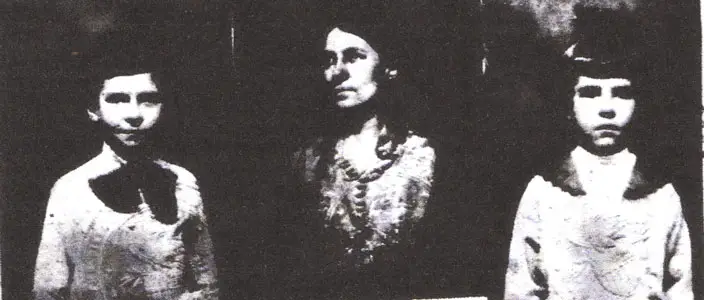
The Monday, May 17th, issue of The New York Times said that Dean’s body had been recovered and identified. The body, #220, proved to be that of his brother, William. Sara Hodges’ body, #209, was interred in common grave B, on May 16th, as one of the unidentified. She was subsequently identified, too late to be brought back to the United States. Department store magnate John Wanamaker interceded on behalf of Sara’s parents, who wanted Sara exhumed and brought home. Letters were exchanged in which Cunard and Queenstown authorities repeatedly reminded Wanamaker and his lawyers of the great costs, and many legal hurdles, to be faced in disinterring Mrs. Hodges, and eventually the matter was dropped and she remained buried in the mass grave.
The body of William Jr. was brought back to the US, on May 26th, aboard the SS Philadelphia and interred in Monument Cemetery, Philadelphia. Monument Cemetery was demolished in 1956/’57 and the bodies buried there, including William Hodges Jr., were exhumed and reburied elsewhere.
William Sterling Hodges’ mother gave an interview in which she stated
I felt that it was foolish and risky for them to start off on that boat with all the doings of the Germans around the English coast. Of course my son had to go because business demanded his presence in Paris, but did not seem sensible for his wife and children to go too. My son is only thirty six years old, and he has been away for such a long time.
Sara Hodges’ recovered personal effects were returned to the U.S on the RMS Cameronia, which sailed from Liverpool to New York on September 26, 1915. They were handed over to William Hodges’ mother and brother. They consisted of:
Compensation was awarded to William Sterling Hodges’ mother to the sum of $9,000.00 and to Sara Hodges’ father, Levi Greissmer, the sum of $2,500.00, on February 21, 1924.
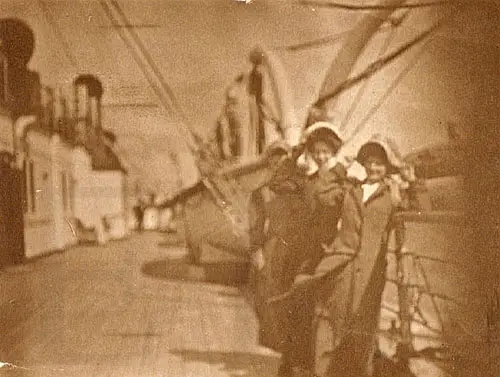
Did the young leaves wonder
If the year were all spring,
With flowers there under
And birds to sing;
with no sigh of trouble
Or hint in the tune
That life is a bubble
And death comes soon.
~Algol (Cyril Herbert Emanuel Bretherton)
Norah Annie Bretherton, 32, embarked aboard the Lusitania, with her two children, out of necessity. Her husband, Cyril, a journalist and a lawyer in Los Angeles, had recently found a newspaper job “At a hopeless wage” but with potential for advancement. Norah, in a post sinking letter, described their financial situation as “having gone from bad to worse” and Mrs. Bretherton, four-to-five months pregnant, was traveling to her sister’s home in Bexhill-on-Sea to spend her “confinement.”
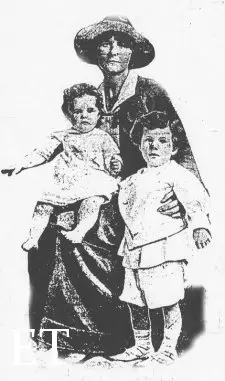
Norah Bretherton and family
Courtesy of Paul Latimer
Convent educated Norah immigrated to the United States in 1910, via Antwerp, aboard the Kroonland and had traveled to Los Angeles to marry her fiance, Cyril Bretherton. Their son, Paul, was born in January 1912 and their daughter, Elizabeth, ca. February 1914. The family resided in Santa Monica, while Cyril worked at establishing himself as a journalist. Norah, despite her apparent misgivings over the family’s finances, supported her husband’s ambition, and in a cache of Bretherton family papers on file at Harvard there exists a draft copy of one of Cyril’s short stories with editorial input offered by his wife.
Little remains to document the Bretherton family’s seven days aboard the Lusitania. The family occupied cabin C-14. Norah made the acquaintance of Mrs. Helen Secchi, of New York City and, by her own account, won the ship’s Second Class whist contest. Chances are good that like the other mothers in Second Class she passed most of her time tending to her children: Betty, at 15 months, was attempting to walk and talk, while three year old Paul would have been energetic, and at the exploring stage which requires constant parental attention.
Mrs. Bretherton had a singularly unpleasant time on the afternoon of May 7th:
I had lunched at the first sitting and taken my little girl up to Deck B to play, and put the little boy to sleep in cabin on C Deck. She was on the staircase when the explosions came:
I begged and implored dozens of men on the way to go down and get Paul- they took no notice. One man looked right at me and I knew he had played with Paul, and I said, “You know Paul. Get [word omitted] in the cabin” but he went on. Then I forced baby into some man’s arms who had got to the stairs (I saw a man pull a woman by the arm and get up in front of her) then I ran down to Deck C…I reached my cabin, smoke was coming up through the floor in the hallway and in the cabin, seized Paul and carried him to Deck B. I dragged the boy along- not one of the men who rushed by offered to help me and I saw a woman with a little baby fall and slide along the deck but saw no one help her up…
Norah’s sister offered a detail Norah never made public, in a May 1915 interview. Once she reached the boat deck, Mrs. Bretherton had encountered the man into whose arms she had thrust Elizabeth, but the man no longer had her infant. Elizabeth was lost in the sinking, although whether she was placed into one of the upset lifeboats or simply abandoned by her ‘benefactor’ and lost when the ship foundered cannot be determined.
I heard men’s’ voices saying “Lower, for she’s full, get into the next boat.” I had a friend in that boat, a woman who called out for them to let me in- and she tells me the men did not want me in. This friend, a Mrs. Secchi was the second person to get into the life boat- she found a man already in it. We had a splendid seaman in charge and another of the regular lifeboat crew- there were otherwise 22 men, and 20 women and five children. We pulled away just as a terrific explosion occurred and the Lusitania went down.
Mrs. Bretherton gave birth to a son, Cyril Junior, the following October. Mrs. Bretherton’s days as a Californian were over: Cyril soon joined her in England, enlisted, and although they brought suit against Germany as United States citizens (eventually being awarded $7500.00 for the loss of their daughter and $1500.00 for the loss of their effects) they lived out their lives in the United Kingdom. Cyril Bretherton became a prominent journalist and author, and among the family’s adventures was an incident in which the government had to intercede to save Cyril’s life after he wrote several inflammatory anti-Irish articles during the 1916 uprising.
Paul Bretherton, himself a journalist,served as a wartime correspondent, and wrote the forward to Poems By Algol, a 1945 anthology of some of his father’s better works. Paul married Margaret Clingan in 1944, with their child, a daughter named Teresa, being born in 1945. Relatives of Margaret Clingan informed Mike that the marriage was short lived, and that Paul Bretherton would not have been welcome in their home after the divorce.
Norah, who was residing with her son, John Christopher, in Ramsbury, died of degenerative heart disease on April 29th 1977, at the Cheriton Nursing Home in Swindon at the age of 94. Paul outlived her by only three years, dying of bronchiopneumonia, as a complication of cancer of the vocal cord, on August 19th, 1980, at 68.

The grave of Elizabeth Bretherton at the Ursuline Convent in Cork.
(Peter Kelly)
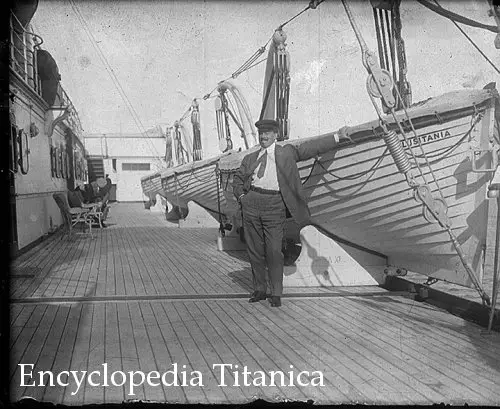
The Lusitania’s Starboard Boat Deck (looking forward).
From a negative in the Jim Kalafus Collection.
Ruth Logan was returning to Ayr, Scotland, for the duration of the war, along with her two year old son, Robert. Her husband, James, had enlisted early on, had been wounded in Ypres, in November 1914, and by May 1915 was once again at the front. Mrs. Logan was leaving their residence of one year, in Paterson, New Jersey, for the security of her girlhood home. Mother and son traveled in third class, and Ruth Logan survived the disaster. Her account remains among the best of the few left by third class passengers; it begins on a staircase where, at the moment of the torpedoing, the young mother was making her way to the open deck with her child walking ahead of her, so that if he missed a step he would not fall far:
I never let him out of my sight, as I was afraid something might happen to him. There were people coming behind me, and when the shock came we were all jolted about. I immediately seized Robert and ran on deck. The vessel had a considerable list to one side, but she righted herself for a few minutes and several men clapped their hands and tried to reassure us that she would keep afloat. The day before the disaster there were sports on board and as Robert was too wee to take part in the general amusement, I took to running after him crying as I did so “I’ll catch you!” And, oh! The tragedy of it all. When the rush for lifebelts came Robert could not understand it all and lisped the words I had used the day before.
Everybody seemed to be running around, and everybody seemed to be getting lifebelts. I appealed to several, but no one in the excitement heeded me until a sailor came along. I took him to be an officer. “Wait a second and I’ll get you one” he said, and he immediately reappeared with a life jacket and he put it around me. I said to him “What about the child?” and he replied “Put him in along with you” and he lifted my child and put him inside the jacket which was around me. He immediately began to struggle, and wanted down on the deck, and another sailor passing me a minute later advised me to put him down till he could get the jacket put on right. I asked him to get a lifebelt for the wee chap, and he hurried forward to get one, and at that moment the ship went over. I held onto his hood and we went down together, and I still had a grip of him when we came to the surface, but the child’s struggles and the struggling of hundreds of others in the water around me caused us to be separated.
Mrs. Logan was in the water for nearly five hours before she was picked up, unconscious, by a torpedo boat, around 7PM. She was still unconscious when she was brought ashore later that night. She awoke in Haulbowline, where, at first, she assumed that her memories of the tragedy were of a horrible dream. She was able to identify her son’s body in Queenstown, before traveling on to Scotland. Robert Logan, body #42, was buried in Common Grave C, in Old Church Cemetery.
Mrs. Logan’s husband, Corporal James Logan of the Gordon Highlanders, survived the war, and they returned to New Jersey together. They had several more children, including a second son named Robert, but their life together was not to be a long one: the 1930 census lists James Logan as being a widower.
The Marsh family, of Toronto, was returning to their former home in Westgate, England. Thomas and Annie Marsh, and their infant son, Thomas Junior, were among the 601 passengers in the overbooked second class. A few days after the disaster, Mrs. Marsh remembered that her husband had a nightmare in which the Lusitania was destroyed, on the evening of May 6th. She said, of the disaster in which her husband and son were killed:
We came from Toronto to New York and took a berth on the Lusitania, which was sailing on the morning of May 1st; I, my husband, and my eighteen month’s old baby. Mr. Marsh was told that torpedo boats and destroyers would escort the ship some part of the way.
I was sitting, sewing, after I had dressed my baby, when I heard the explosion. Rushing to the steps I saw my husband, who took me to the second class deck. I remained with my husband as long as I could, and tied the baby around me. The first explosion caused the ship to list heavily, which made it difficult to get to the deck. In doing so, many people were thrown down and injured.
I took to the water as the vessel was sinking fast. Within a few minutes the baby got loose, and I lost him. After being in the water for over a half-hour, and only being kept afloat by holding on to two large pieces of wood, I heard a man callout “Come on, lady!” One of the stewards was in the boat, and he assisted me in to it. Later, we were taken to Queenstown.
Annie Marsh was in the lifeboat recalled by several other survivors, in the bottom of which were a dead infant, and several adults, who died of exposure after being pulled aboard.
Annie Marsh Wood died in Faversham, Kent, in early 1977.
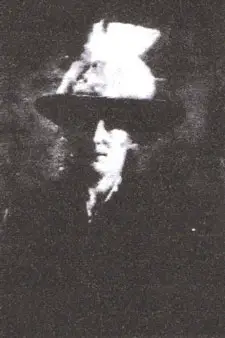
Mabel Docherty
Five week old William Docherty, of New York City, was one of only four infants to survive. His mother, Mabel, 29, a former maid, sent this account to her one-time employer, with whom she remained on good terms:
I took the baby down to lunch with me. We had just ordered dessert, and he was asleep. I said to Jessie, ‘After lunch I will take him to the cabin.’ Then the crash came and immediately everyone jumped and made a dash for the staircase.
I stood back with baby. Jessie said ‘Come along, the boat is going down fast.’ The steward took my arm and helped me and took baby up the stairs, and helped us along the deck over a rope ladder into the last boat, just as the funnels came down. Our boat was between them.
We were only about fifty yards from the boat when it went down, and the German submarine was sailing around watching all the people in the water.
The crew was fine, and helped every one, but there was not much chance as she went down in fifteen minutes.
We were picked up by a fishing boat and then by a mail steamer and taken to Queenstown. All this time I never let anyone have baby. I clung to him like glue.
The American Consul took us to his house in Queenstown and treated us beautifully. Then we had to go to Dublin and over the Irish Channel to Liverpool before we got home.
Every one was crazy about baby, as he was the youngest one saved, and at Queenstown the Irish women nearly ate him up. Of course, we have nothing left. All baby’s clothes and mine are gone. But, thank God, we are safe.
Mabel Docherty returned to the United States, where she died at age 77, in Ardmore, Pennsylvania, in May 1966. William Thomas Docherty, Junior, the youngest survivor of the disaster, died in Haverford, Pennsylvania, on October 27, 1972, at the age of 57.
A mother’s love placed Margaret Hastings, of New Rochelle, New York, aboard the Lusitania. Mrs. Hastings had been widowed some years previously. With several children to care for, she chose the best available option and emigrated from Northern Ireland to the United States. She lived with her brother in Westchester County, New York, and worked as a doctor’s housekeeper. Her children remained in Ireland, with her parents. Mrs. Hastings soon saved enough money to bring her oldest son to New York, where he found work in construction.
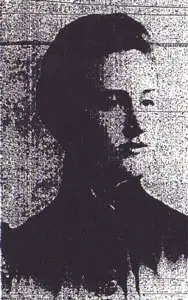
Margaret Hastings
Margaret often read about the mounting human toll of World War One, and became concerned that her younger son might be forced into service, or enlist. So great was her fear, that she took her entire savings and purchased passage to New York for the boy. She intended to see to it that he arrived safely, and so purchased herself round-trip passage aboard the Lusitania. The North Street travel agent from whom she bought the third class tickets later described her as “preoccupied” and “fearful” about the war. Margaret Hastings was lost in the disaster, and whether her son remained in Ireland or immigrated to the United States has not yet been determined.
Ellis Wilson Greenwood, of South Boston, saw his eleven year old son, Ronald, depart aboard the Lusitania on May 1st. Wilson had lost his wife the previous September.
I only hope my little boy is safe. The boy became very lonesome and even his school days at the Lincoln school could not break his melancholy.
A few months ago his mother’s people in Halifax, England wrote me and said that if the boy longed for somebody to take his mother’s place to send him to them.
Ronald saw the letter before I did and he plagued me to let him go back to England. I told him to wait till warmer weather came, so two weeks ago he again tried to have me send him. So I got his uncle Mr. Spencer of Lawrence, to book passage for my boy and he sailed.
An article in The Boston Globe spoke of how Mr. Greenwood had arranged for a second class steward to look out for his son on the crossing:
Mr. Greenwood was unable to go aboard the Lusitania at New York, but the little fellow was courageous to the end, and with a cheery “Well, never mind, dad, I’ll go aboard alone and find the steward,” he trudged up the gangplank, halting at the top to turn and call back an affectionate “Goodby, dad!”
That was the last father and son saw of each other. Mr. Greenwood knew nothing about the warning, published by the German Embassy against taking passage on the Lusitania.
Boston Globe, May 9, 1915.
Ronald was en route to Northowram, Halifax, Yorkshire, when he died in the disaster.
Mrs. Jane Grant MacFarquhar, a woman of about 53 years in 1915, was traveling to Scotland to settle some family financial matters when she survived the Lusitania disaster.
Jane had inherited her father’s estate in Burghead some years previously. Mr. Grant’s will allowed his wife, Jane’s stepmother, the right to use the estate he had left to Jane while she, Mrs. Grant, lived. Mrs. MacFarquhar had learned that the 83 year old woman was seriously, and likely terminally, ill and, in anticipation of her death, was traveling to her paternal home to oversee the eventual disposal of the property. Her youngest daughter, Grace, 16, accompanied her.
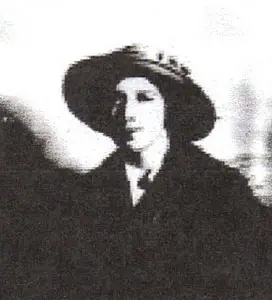
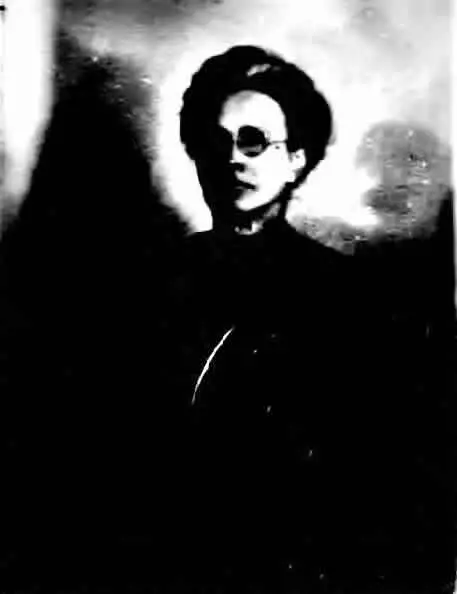
Grace MacFarquhar, Jane MacFarquhar
The MacFarquhars booked second class passage on April 27, 1915, and planned for a long stay, of undetermined time, in Europe:
I boarded the Lusitania with all faith in the Cunard Co., as I believed they would never leave New York with so many passengers without being prepared for any emergency. I also trusted in British protection through the war zone, and I thought that a boat of such value to the country would never be left to the mercy of the enemy with its large number of passengers and cargo.
Jane described the voyage as being an extremely pleasant one. And, like many other passengers, Jane would relate that there was a sense of unease as the ship entered the war zone:
The voyage across the Atlantic was ideal. I think a happier company of passengers would be impossible to find. They were of all ages: a large number of babies in their mothers’ arms, children of various ages and men and women up to the age of seventy.
Games were heartily enjoyed on the decks during the daytime and concerts were enjoyed in the evenings-sunshine and happiness making thoughts of danger almost impossible. We had every assurance from the employees that nothing could harm the Lusitania.
On Thursday morning I felt rather uneasy when I discovered that the lifeboats were hung over the side of the ship. On inquiry, I was informed that it was essential that they should be so – according to law. I thought it rather strange that they had not been put ready after clearing New York instead of waiting until we were so near the other side. I noticed the other passengers did not seem to bother, so I also began to forget the lifeboats.
On Friday about an hour before the boat was struck, I stood on one of the upper decks. The view was grand, the sun shining, the water smooth and land visible on either side. As I gazed around the beautiful scene, I thought “Where is the spoken of danger? The end of the voyage is almost in view and we have had no sign of danger whatsoever.”
Jane and Grace spent their final day aboard the Lusitania preparing for disembarkation the following morning. They carefully laid out changes of clothing for themselves before attending luncheon in the Second Class Dining Saloon:
While seated at luncheon, my daughter by my side, I should think about 2:15, I suddenly heard a rumbling noise right underneath our table or so it appeared to me. The noise proved to be the torpedo striking the vessel. Instantly all passengers rose from the tables and made for the staircase as fast as they could. We were amongst the last to ascend…it was with difficulty that we reached the top of the three flights of stairs which led to the deck where the lifeboats were.
Following the crowd to the high side of the vessel and seeing the large number of passengers all along trying to get to the boats, I said to my daughter “There is no chance of safety here, we must try to get to the low side”……it was dare or die. We made the attempt. At one point my daughter went slipping right down to the edge where she caught the iron railing- thus saving herself from landing in the water below. Meantime a steward called for me to go ahead while he assisted my daughter back to where I was. Next we had two first cabin saloons to pass through, which we did from chair to chair. On nearing the entrance which led to the lifeboats, an officer who stood there said “Ladies, stand where you are.” We obeyed and in almost a minute he told us to come right on.
A lifeboat was right in front- almost full; another lifeboat, covered over, lay between. Climbing on top of the covered boat I saw one on the davit about three feet from the sinking vessel…there I made a spring, landing somehow in the lifeboat. I thought my daughter was following my example, but she was stopped, being assisted further back on the boat. The Lusitania had sunk so bad that our lifeboat, when lowered, had only a few feet to reach the water. The sailors had no sooner got the oars when a great cry came from the deck of the sinking vessel- “Row for your lives!” I gave one glance to see if it were really possible that the Lusitania was going down so soon. I quickly turned my head away. The sight was too terrible to see – a deck full of people sinking into the ocean- no fate for them save drowning.
After our boat had been rowed out of danger I turned my head for a last glance. The stern was alone visible. It was crowded with people who seemed to make for the last piece of the wreck left above water, while others unsuccessful in their efforts to gain this temporary safe place, were falling over the side. All around were wreckage and human beings struggling for life. A number of hands were to be seen raised in a signal for help from the boats. Three of these were taken into our boat- all aged people. That was all our boat, with safety, could take on board. I think more were saved from the water than saved from the deck; so many boats were overturned in the lowering.
A British patrol boat eventually picked up the MacFarquhar’s boat, and they were landed at Queenstown around 9PM.
Jane and Grace remained in Scotland for more than three years before returning to Mr. MacFarquhar, and their home in Stratford, Connecticut, at the war’s end. Life was comfortable for the family at first. Grace studied nursing in New York, and graduated as a registered nurse from Metropolitan Hospital in 1924. A biographical sketch of the MacFarquhars published in the 1930s claimed that an unnamed “nervous condition,” which Grace and her mother blamed on the Lusitania experience, deferred her nursing career.
John MacFarquhar, Jane’s husband, was seriously injured during the summer of 1926. He was burned on the face and neck when an elevator motor he was repairing, at the Columbia Records manufacturing plant, in Bridgeport, exploded. He was hospitalized through September 1926. On Christmas day of that year, he went out to his work room, in a small, separate, building behind his family home; Jane found him, near death from a heart attack, on his couch a half hour later. He died before reaching the hospital.
Jane and Grace’s fortunes declined precipitously after John MacFarquhar’s death. They sued Columbia Records, blaming his terminal decline on the injuries suffered in the explosion. Their case was dismissed, then reinstated on appeal. If a settlement was reached, the newspapers did not report it. By the mid 1930s they were living in a small but comfortable duplex at 199-201 Hollister Street in Stratford. One of Grace’s arms was partially paralyzed and Jane, in her 70s, was supporting the two of them by tilling her small vegetable garden at the home she “owned clear.” They were the subject of a newspaper profile on the anniversary of the disaster, which may have exaggerated their penury for human interest, but which contains their last known, and bitter, public statements about the disaster. Jane died, at age 79, on April 21, 1942 and was buried beside Mr. MacFarquhar at Stratford’s Union Cemetery.
Grace MacFarquhar may have returned to nursing after her mother’s death. Details are sketchy, but a letter written by her brother, Colin, in the early 1970s reveals that by then she was under the care of her niece, Mrs. Jane Peck, of Bristol, Connecticut. She died in New Britain, Connecticut on February 9, 1979, at age 80, and was returned to Stratford for burial beside her parents in Union Cemetery. The MacFarquhars share a single stone and are the easiest grave in the cemetery to locate; they are literally the first grave on the left as one passes through the entrance.
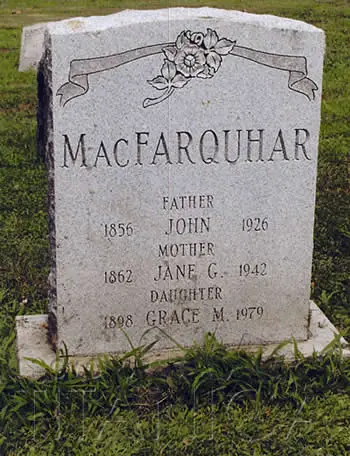
James Haldane, en route to Glasgow from Quincy, Massachusetts, survived to relate the final moments of an unknown, doomed, man and child:
Many women put the lifebelt around their waist. As a consequence, they were unable to keep their heads above the water and were speedily drowned.
The most pathetic sight of any which I witnessed was that of a man who strove bravely to save his child- a wee mite of eighteen months or so. I was swimming some distance away from them when they first came under my notice. The man had got hold of a hatch cover and had lifted the child on to it. He himself was in the water clinging to the wreckage with one hand, while with the other he held the child, keeping her in a sitting position. Their case seemed hopeless. The child was about done for when I saw them, and the man was palpably near the extreme stage of exhaustion. He was as white as a ghost.
I turned on my back to rest, and when I looked again the man and child had disappeared, and the wreckage to which they had been clinging was floating away… the impression made on my mind by that little tragedy stamps it the most vivid of all my recollections of the awful time I spent in the water.
Believe Lusitania Survivor Killed
Quincy Man Enlisted to Avenge Outrage.
James Haldane Saw Birth and Death of Big Liner
Aug. 29, 1918: The “J. Haldane” of Quincy, whose death in battle was reported by the Canadian authorities, was probably James Haldane, who was a passenger on the Lusitania when she was sunk off the Irish coast. He was probably the only man who saw the birth and death of the great ship.
Haldane worked on the Lusitania when she was building, several years before he came to this country. He was one of the last men to leave the ship when she was sinking, for, brought up where men build ships, he lived by the creed of “women and children first.” He went overboard when there no more lifeboats or life rafts left.
He was reported drowned at that time, and gave his friends here a pleasant shock when he cabled news of his rescue. He came back to this country several months afterward, and enlisted in the Canadian Army. Reports from him since then have been a bit irregular, and unconfirmed accounts of his death have come here from time to time.
Matron Leitch, who was transferred to the Lusitania from the Cameronia on sailing day, encountered a mother forced into the horrible position of having to abandon one child to possibly save another, as she attempted to escape from the sinking liner.
Just about the time when we were first struck, I, Mrs. Craigie and Mrs. Phillips were in our cabin. We were resting before lunch when the crash came, and Mrs. Craigie said “Come, and get up!” Just then, the water bottle came into the middle of the room, and she said “For God’s sake, come on!”
We ran upstairs, and saw the passengers rushing up….there was a great crowd on the stairs, and we climbed up the steam pipes leading to the bridge.
We found a woman with a little boy, anxious about the welfare of her other child, but we told her to be content with the one she had already rescued. Mrs. Craigie and I took the little chap upstairs with us.
Mr. Jones was lowering a boat, but one side went down first and it filled with water. I then went through the drawing room to the other side, and on the way I met a man coming up with some lifebelts. He gave me two, and I gave one to another woman.
Just then came the second report, and I was swept off the deck. I could not swim, but when I came to the surface a man said to me “Hold on to this chair, and I will look after you.” This man stuck by me while I was in the water for about two hours, and the last thing I could remember him say: “For God’s sake save this girl; she’s dying.” I was then lifted into a little boat, and from there taken to a trawler.
Margaret Craigie and Mary Phillips survived as well, but the identity of the mother and child they attempted to save cannot be determined.
Inez Wilson, 46, who was traveling to Shornecliffe to visit with her husband, a member of the Canadian Expeditionary Force, spoke of another doomed family in her account:
Our lifeboat was almost dragged down with the ship. We could have touched her with our hands, and one man pushed our boat away with his oar against the Lusitania’s side.
We helped in rescuing the people swimming and floating about, ‘though there were over 80 in our boat alone and she was full of water.
A man with another child was trying to get into that boat, too. Before we left the ship he was nearly frantic. “My God” he cried, “I want to save my darling, but they won’t let me in to the boat.” I said “Give me the baby” but he would not give it to me. I could have saved the child, I think, if he had parted with it to me. The poor man was quite distracted, shrieking “My God, they won’t take me.”
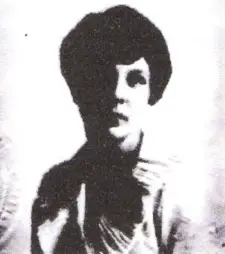
Virginia Loney
When one hears the phrase, “poor little rich girl”, it normally conjures thoughts of Shirley Temple, Mary Pickford or Gloria Vanderbilt, but no one is more deserving of the title than Virginia Loney. She was born, on May 19, 1899, to a life of privilege. Her parents were Allen Donnellan Loney, a one time member of the New York Stock Exchange, and Catharine Wolfe Brown.
Mr. Loney had sold his seat on the stock exchange shortly after the birth of Virginia, his only child. He continued to work as a bond salesman and stockbroker, generally earning $10,000 a year. Though well off, his wealth was far surpassed by that of his wife.
The Loneys traveled frequently, alternating between their homes in New York, Maryland and Northamptonshire, England. They are known to have traveled aboard many famous liners, such as the Cedric, Amerika, George Washington, Campania, and Mauretania. They arrived in New York aboard the Olympic on April 10, 1912. Several days into her next voyage, she would receive an S.O.S. from the Titanic.
Their home in England, Guilsborough House, had a stable with twenty hunters, and Allen Loney was considered one of the best riders in the area, and was described as an “excellent whip.” Catharine and Virginia were proficient riders, as well. Virginia learned how to swim while summering at their lake house in Skaneateles, New York.
Virginia and her parents returned to New York, aboard the Celtic, in September 1914, after summering in Northamptonshire. They took up residence at the Gotham Hotel, on Fifth Avenue. Allen Loney returned to England shortly afterwards. He joined the British Ambulance Corps, and supplied his own automobile, which was equipped as an ambulance. He and his chauffeur spent much time in France and Belgium, helping out however they could. Catharine Loney decided return to England and work in a convalescent home. She was to spend the summer caring for wounded soldiers. She also gave permission for two of her cars to be donated for use as ambulances.
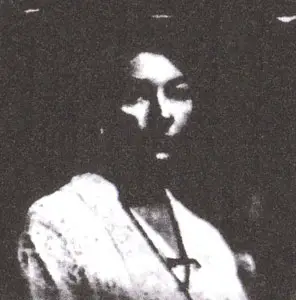
Catharine Loney
Her husband did not want his family traveling alone, and so sailed back to the United States, aboard the Adriatic, to escort them. They booked passage on the Lusitania on April 21, 1915. Catharine revised her will shortly before they sailed, leaving her daughter an estate worth over $1,000,000. The family paid $1,020.00 for cabins B-85, B-87, which included a private bath.
Virginia spent most of her time during the voyage with her maid, Elise Bouteiller. Her parents were friendly with Canadian Joseph Charles, of the Musson Book Company, and his daughter Doris. The two families frequently sat in the lounge together, although Virginia had little in common with the older Doris, who was being taken overseas as a precaution. She was involved in a romance with a man named Elliott Lawler, and her parents felt that, at twenty-one, she was too young to get married.
Virginia was resting in her cabin after lunch with her maid, on the day of the disaster:
It all happened so quickly. When the Lusitania was torpedoed, I was in my stateroom. I had no idea what had happened, but joined in the rush for the deck. There, everything was in confusion. My father went down to get some lifebelts and returned with a number, which he distributed around, but did not keep one himself.
The family stood on the portside of the boat deck at the back of a crowd.
There was a lifeboat being lowered and he [her father] saw there was just one place left. He ordered me to get in. I protested, but finally obeyed. It was the last lifeboat launched from the ship.
Virginia looked up from her place in Boat 14, and saw her parents standing at the rail. Years later, she told Adolph and Mary Hoehling that Alfred Vanderbilt was near them. It was a difficult descent, for the liner was listing to starboard. The boat cast off, but the plug was not in and water entered the lifeboat, making it unstable. Boat 14 capsized as the Lusitania sank beside it.
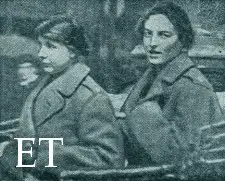 |
| Virginia Loney and Doris Charles Jim Kalafus Collection |
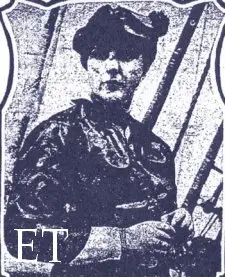 |
| Virginia Loney, ca 1917 Mike Poirier Collection |
The lifeboat was overcrowded and was only a few yards from the Lusitania when the big liner went down. Suction from the sinking vessel caused the lifeboat I was in to capsize. With other passengers in the boat, I was drawn ever so far down in the water. When I reached the surface again, there was nothing to be seen of the Lusitania. People were struggling in the water all around me. I swam to another lifeboat, which was not far away, and was pulled aboard.
She was rescued by a fishing trawler that brought her into Queenstown. There were no sign of her parents or her maid. Joseph and Doris Charles took responsibility for her:
Mr. Charles and daughter, of Canada, who were rescued from the Lusitania were very kind to me, taking me to London with them. I stayed in London overnight, then a maid arrived from my cousins, with whom I was to visit.
Virginia was taken to Guilsborough House. She turned sixteen, but there was little to celebrate. She then booked passage to the United States on the St. Paul. Mrs. Harry Sedgwick escorted her while on board the ship. Many Lusitania survivors were aboard that voyage, including Joseph and Doris Charles, Ernest Cowper, Maud Thompson, James Leary, Charles Sturdy, Ogden Hammond, Daniel Moore, Herbert Colebrook and Percy Rogers,who had also been in Boat 14 with Virginia, among others.
A submarine began following the destroyer assigned to protect the St. Paul during the voyage, People stampeded on deck when they heard that a submarine was sighted. Lifebelts were handed out and lifeboats were readied for lowering. Miss Sedgwick said, “There’s a submarine!” Virginia grasped her arm and cried, “No, no, I can’t stand it again.” The ship arrived on June 13th, and Miss Loney was taken to Huntington, Long Island to be with her maternal uncle, George McKesson Brown. He assumed responsibility for the girl, as did Mary Chamberlaine, who oversaw her care.
Virginia Loney received, outright, property worth $45,000: her mother’s jewelry that did not go down with the ship; $12,000 trust from a great-aunt, and an automobile, among other things. An itemized list of essentials for Virginia’s upbringing was brought to the court’s attention. The list included:
Rent…$5,000
Food and supplies…$4,000
Clothing…$3,500
Three servants…$1,200
School, music and languages…$2,500
Summer vacation and travel…$2,500
Automobile and chauffeur…$2,000
Recreation…$1,500
Maid…$600
Doctors and dentists…$500
Insurance…$200
Incidentals…$1,000Total…$25,500
The Mixed Claims Commission awarded Virginia $26,700 for the loss of her parents. Her uncle George was given $15,450 as executor of Cathe4rine Loney’s estate. Mary Chamberlaine received $1,235 as the executrix of Allen Loney’s estate.
She met Robert Howard Gamble, of Jacksonville, Florida, a few years later, while overseas. He was ten years her senior. Mr. Gamble was an aviator and served in the Naval Reserve. His family was originally from Tallahassee, Florida and Richmond, Virginia. The two were married on April 27, 1918.

Virginia Loney from a passport application photograh
Virginia inherited $1,452,000 from her late mother’s estate, when she turned 21. She gave birth to two children, Robert and Catharine Gamble, but all was not well with the marriage, and Virginia and Howard separated. Finally, they divorced in the Paris courts in the spring of 1923.
Virginia and her children returned from France on the Aquitania. A few months later, Robert Gamble went to Huntington, New York and took his children to Jacksonville. Virginia reported them kidnapped. The scandal made its way into the newspapers. Virginia’s ex-husband vowed to fight a custody battle in the Florida courts. A custody agreement was eventually reached, and when Virginia married Paul Abbott, on January 29, 1926, her ex-husband allowed their children to attend the wedding.
The Abbotts honeymooned in Akin, South Carolina before returning home to Long Island. Virginia then gave birth to her second son, Paul Abbott. She continued to live the life of a gracious Long Island matron, though sadness returned when her married daughter predeceased her. Paul Abbott, Sr. died in 1971 and Virginia passed away on April 4, 1975 in Southampton, New York.
Virginia’s shipboard acquaintance, Doris Charles, died on February 6, 1969, in Toronto, Canada. She had eventually married Elliot Lawler, the man from whom her parents had tried to separate her in May, 1915. She was 76.
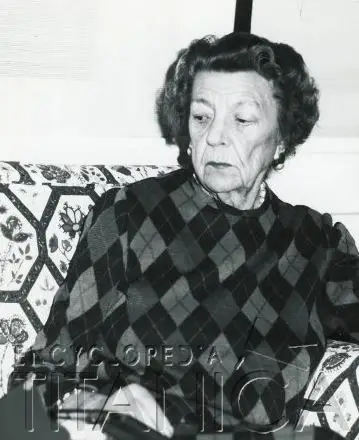
Virginia Loney Abbott
Courtesy of Kit Mead
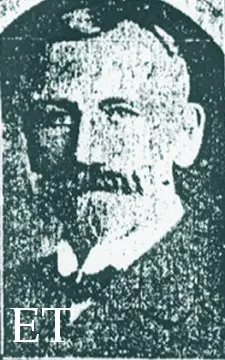 |
| A.R. Mainman. |
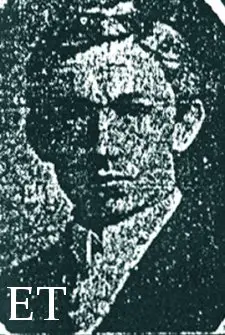 |
| Alf Mainman. |
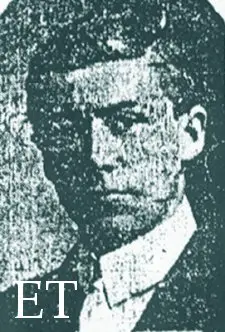 |
| John Mainman. All above courtesy of Mr. Paul Latimer |
The Mainman family, of Edmonton, Canada, was on a journey described as being “associated with a great deal of romance.”
Alfred Reid Mainman, age 55, had received word in early 1915 that his parents, John and Mary, had passed away in Exeter, England. He was their only child and he inherited their considerable estate. The press reported that his parents’ solicitors had found over $10,000 in cash in the house. Mr. Mainman realized that with his parents’ money, and the additional funds generated by the sale of the estate, it would be to his family’s advantage to relocate to England. He resigned from his job with the City of Edmonton’s Treasurer’s Office, and made arrangements to dispose of any household items from their Jasper Street home not needed in England. There were formalities to be completed, and his employers forwarded a sworn photograph of Mr. Mainman to the solicitors to assist in identification.
The Mainmans were used to moving. As a young man, Alfred Mainman had settled in Victoria, Australia, in 1882. He married Elizabeth Sarah Dowsett in 1893. She gave birth to their first three children in Victoria; John, ‘Jack,’ 1894; Alfred Shaw, ‘Alf’, 1895; and Mary Frances, ‘Molly’, born September 1, 1898. The family then immigrated to Canada and first settled in Fort Saskatchewan before establishing their permanent home in Edmonton. Elizabeth gave birth to twins on October 4, 1907; Edwin Richard, ‘Teddy,’ and Elizabeth Sarah, ‘Betty’.
The family booked second class passage on the Lusitania’s May 1st voyage. There is little known of their shipboard activities, or experiences in the disaster. Molly gave a brief account in which she said that she and the twins were able to get in a starboard lifeboat. She was handed an infant, about three months old, just as the boat was lowered, and she held on to it until they reached Queenstown. Commander Chaytor of the HMS Ariande and his wife then took charge of the three. An acquaintance who visited them said:
Nothing can equal the love and tender care which this worthy couple are bestowing upon these bereaved children who are now most comfortably housed and clad and I am sure that the little ones appreciate, in their own way, the great kindness of their new friends.
Molly had the responsibility of searching the temporary morgues in Queenstown, where she found only her brother, Jack. He was buried in Queenstown on May 13th. The rest of the family was not recovered. When the Mainman children arrived in England, they were housed with Mr. and Mrs. Ellison of Liverpool. John Mainman’s personal effects were forwarded to Mr. Ellison, who returned them to the family. They also received a 25 pound grant from the Lusitania Relief Fund. Their final destination was the home of Mrs. Clarence Merrett, a relative, who lived at Montrose, St. Thomas’s Hill, Canterbury. Mr. Brown, the family solicitor from Exeter, oversaw their inheritance.
Molly Mainman was now the matriarch of the decimated family. She saw to the care of her siblings, and never married, dying in late 1973, at age 75. Elizabeth and Edwin settled in the Liverpool area. Elizabeth was wed to John Kennedy in 1936 and Edwin to Doris Holmes in 1937. The twins lived long lives. Edwin Mainman passed away in January 1976 in Beccles, Suffolk and Elizabeth Mainman Kennedy died in late 1983 in Lancaster.
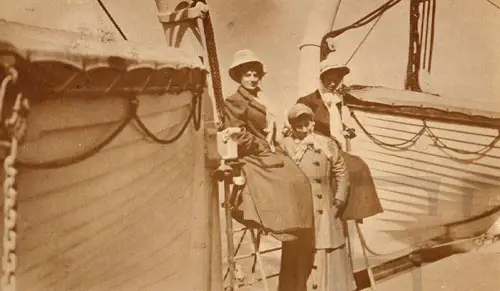
A family group on the Lusitania
Jim Kalafus collection.
Annie Williams and her six children boarded the Lusitania in defeat, facing an uncertain future, in sad contrast to the Mainman family who set out for England with bright prospects.
John and Annie Millman Williams were married in Manchester, England in 1896. They immigrated to the US in April 1904, settling in New Jersey. The record of the William’s suit against Germany claimed that their infant, David, was their ninth child, but only six are named in the case; Edith; John Edward; George Albert; Ethel; Florence and David.
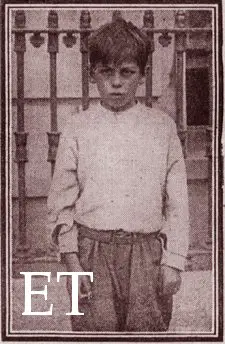
Edward Williams, who along with his sister Edith, was one of only two of Annie Williams’ children to survive. |
John Williams was employed as a groom until early 1915, when he entered service for Cunard as a steward and departed NYC aboard the Lusitania‘s final completed eastbound crossing. Edith said in interview, in later years, that he was deserting the family. Williams, in his testimony, claimed only to be traveling on ahead to set up a home for his wife and children in England. According to Adolph Hoehling, Annie Williams’ financial situation was such that her neighbors in Plainfield, New Jersey, “passed the hat” to raise funds to return her, and the children, to her paternal home in England.
Edith later recalled taking a walk with her mother the evening before the disaster. The following day, Edith would remain aboard the ship until the last and would be swept from a ladder connecting the boat deck to the funnel deck as the ship sank under her. She held on to her sister, Florence, until the suction described by many other survivors pulled the child away. Passenger Rose Howley rescued Edith Williams.
Edith and her brother, John, were the only members of the Williams family to survive. Neither Annie, nor any of her other children, were recovered or identified. Later, an attempt was made to engineer a reunion between Edith and Mrs. Howley, but Rose said that she had only done her duty as a Christian, was not a hero, did not see the need for such a get together, and would not participate. Edith and John were taken back to the U.S. by their father in 1916, and settled once again in New Jersey. They soon returned to the United Kingdom. An account in Dunsmore’s book claims that Edith ran away upon her father’s reappearance in England, which, if true, would suggest that this move was not a happy interlude for Miss Williams.
John Willliams filed suit in the United States, requesting from Germany $40,000.00 for the loss of his wife and four children, and $250.00 for the loss of their personal effects. His suit was dismissed, for as a U.K. national he was not entitled to make his claim in the U.S. courts.
Edith and John Edward Williams’ suits failed on the same grounds in both the United States and the United Kingdom. Pain and suffering caused by the loss of a loved one were not cause for a financial settlement by 1925 standards. Neither child could prove direct financial support provided by Annie. Their father, who was suing in the same court system, would not have been likely to admit desertion at the possible cost of his $40,000.00:
The record is barren of any statement of fact which would enable this commission to measure the damages, if any, sustained by the two surviving children of Mrs. Williams and resulting from her death.
There is not a scintilla of evidence in the record throwing any light on Mrs. Williams’ character, pursuits, habits, relations to and influence over her children, or any fact on which the commission could base a conclusion that the surviving children had suffered pecuniary damages resulting from her death.
It must be assumed that no such evidence of damages exists. At all events the claimants have wholly failed to discharge the burden resting on them to prove their case.
It seems that a grant of 5 pounds John Williams received from the Lusitania Relief Fund was the extent of their financial settlement.
Edith Williams completed 15 years of schooling. She eventually married and divorced, and she retained her married surname, Wachtel, for the rest of her life. She lived in Carmichael, CA, and worked as a registered nurse for 49 years. She died of cardio-respiratory arrest on May 12, 1992, and was cremated, with her ashes scattered at sea near San Francisco.
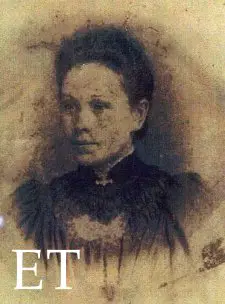 |
| Rose Howley Courtesy Cathy Higgs |
Rose Howley, Edith’s rescuer, had been visiting her niece, Mrs. Arthur Leary, in New Rochelle, New York for over a year before the disaster. She had come to the U.S. to care for Mrs. Leary during the final months of her pregnancy, and then stayed on to help run the household. She injured her arm while living with the Learys, and was under a doctor’s care for a time. Mrs. Howley decided to return to england in April, 1915. Concerned with the German threat, she had made inquiries and was assured that the ship would not have any trouble with submarines. The Learys escorted her to the ship on May 1st, to see that she got aboard safely. Mr. Leary, a New Rochelle police officer, would tell the papers, on May 8th, that Rose was a woman of “surprisingly strong opinions”, and that he had no doubt that she, of anybody, would survive, despite her injured arm.
Her hometown paper gave this detailed account worth quoting in full:
There were quite a number of Irish people on board and they naturally became very friendly. On getting within sight of their homeland Mrs. Howley remarked, “Look at the green hills of Ireland. God save Ireland.” and they with one broke out with “God save Ireland” and “The Land of the West.”
After this, Mrs. Howley and another woman were walking along the deck when they heard a tremendous explosion and felt that something had struck the side of the ship… The two women promptly made for the bow, but there was a rush of passengers, who tumbled over each other and knocked the two down. Mrs. Howley shouted, “Be quiet; better be drowned than killed on board.” Mrs. Howley and her companion managed to get to the spot where the sailors were launching the boats. An officer behind her, whom she recognized as the captain was appealed to for assistance, and he replied, “You must do what you can for yourself. Go into that room and get a lifebelt.” A man was just coming out of the cabin and put a small belt round Mrs. Howley’s neck. She felt disinclined to join in the rush for the boats. The people around her were saying, “She’s sinking fast.” She turned to the other woman and said, “Well what are we going to do?” “I don’t know,” came the anguished reply and Mrs. Howley rejoined, “Well let us stand here and die together.”
Just then, Mrs. Howley caught sight of a rope hanging over the ship’s side and as people were jumping overboard, she seized the rope and slid down into the sea. By this time the ship was sinking rapidly and almost as soon as she entered the water there was a big explosion as if the ship’s boilers had blown up. People were blown into the air and the sight was a terrible one. When the ship went down Mrs. Howley – she had by this time lost her companion- was drawn under by the suction but through her lifebelt came to the surface and all around people were struggling and calling for help. For a second time Mrs. Howley was drawn down and on rising again she touched a hard substance, which proved to be an upturned boat, to the keel of which two or three men were already clinging. She appealed to them for help and they encouraged her to retain her hold. She did so, and eventually one of the men managed to pull her partly in the boat.
While she had been endeavoring to get a firm hold of the boat, Mrs. Howley felt something tugging at her dress and looking around she noticed it was a small girl. She exclaimed, “Oh, it is a child” and with the assistance of the men, the girl was pulled up as well. Mrs. Howley then recognized her as Edith Williams, one of a family whom she had become acquainted on the ship. They were the mother, five girls (sic), and a boy and only the boy and Edith were saved. They clung to the boat for four hours before assistance reached them. Little Edith was in an exhausted state when she was pulled onto the upturned boat but one the men spared no pains in rubbing until she was revived.
At Queenstown, the streets were lined with sympathetic crowds like on Parish Feast Day at Keighly, and some of them were so touched on hearing Edith’s plaintive inquiries, “Where’s Mother? Where’s baby?” The rescued survivors were taken to hotels and well cared for and the American Counsel made inquiries whether any were American citizens. Mrs. Howley calling his attention to the fact Edith Williams was born at New Jersey, he took charge of the girl and on Saturday morning a lady came from Cork to relieve him of his charge. It transpired that the Williams family were going to rejoin the father who was in the neighborhood of Manchester.
Rose Howley’s family remembers her as a stern but loving, woman, who would bless each room in her house with Holy Water during thunderstorms. She died on December 23, 1945 in Yorkshire, England, at age 79.
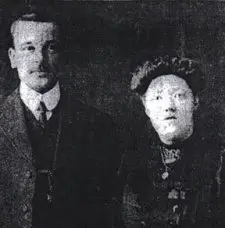 |
| Arthur and Lydia Grandidge Copyright Yonkers Herald Jim Kalafus Collection. |
The ladies of The English Ivy Lodge, Daughters of St. George held a Bon Voyage Reception for club officer Lydia Grandidge on April 27, 1915 at the Richard Armistead residence, on Cedar Street in Yonkers, New York. Lydia and her three year old daughter, Eva Mary, were to depart aboard the Lusitania on May 1st for an extended visit to Yorkshire, and the party was of enough social significance in the Yonkers English community to be covered by the city press.
Lydia and her husband Arthur had emigrated from Leeds, Yorkshire, England to Yonkers in June 1912, aboard the Caronia. Lydia entered the United States under the name of “Nancie” Grandidge. Perhaps Lydia was her middle name, or a nickname by which she preferred to be addressed. The Grandidges joined Lydia’s father, Nathan May, and her sisters, Mrs. Richard
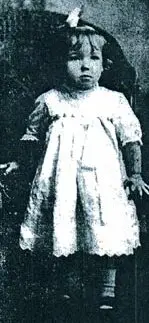
Armistead and Mrs. Samuel Dawson, all of whom were already living in Yonkers. Arthur Grandidge, although a coachman by profession, found work as a janitor in the Weller Building in Yonkers, and as jack-of-all-trades in his neighborhood. Their home was at 8 Highland Avenue, at the corner of Broadway, in what was then a solidly working class, and predominantly English, section of the city.
Lydia’s sister, Mrs. Elizabeth Stead, of Leeds, had visited with her family in New York during the winter of 1914/1915, returning to the England “in poor health” aboard the Lusitania on her February crossing. Lydia was traveling to Leeds, with Eva Mary, to pay a nursing visit to Mrs. Stead. They meant to return to Yonkers in September. Neither survived the voyage and, as far as we can determine, no one who survived left record of how Lydia and Eva spent their final week.
What remains from that time is a sympathetic record in the Yonkers press of Arthur Grandidge’s efforts to learn anything of his family’s fate. On May 8th, the shaken Mr. Grandidge informed the press that neither he nor Lydia had seen the German warning. It was reported in Yonkers, on the 9th, that Mrs. Grandidge had been saved, but on the 10th a follow-up story revealed that friends of the Grandidges had read the name “Mrs. Candlish” on the list of survivors and had been struck by the (admittedly slight) similarity of sound between the two names.
Mrs. Lydia Grandidge. Heavily built; hair “light sandy.” Scar on inner side of one wrist. Jewelry: Four rings on fingers; one wedding ring with three small stones inscribed “Lydia May.”
Miss Mary Grandidge. Age 3½ years. Ankles scarred. Jewelry: coral bead necklace.
Arthur Grandidge and Nathan May continued to inquire at the Cunard offices throughout the month, but no trace of Lydia was ever found. Eva Mary’s body was eventually identified, after having been buried in the mass grave in Queenstown. Her personal effects, most notably her necklace, were shipped back to her father via the Carpathia in July, 1915.
The 1930 U.S. Census shows Arthur Grandidge as still living in Yonkers. He had married a woman with a large family, and had become a widower for a second time. He and his younger step-children were living with his married step-son in a pleasant, middle class district of the city, near the race track.
Alice and Arthur Scott
A happier, but still bittersweet, ending lay in store for Arthur Scott, senior, of North Adams, Massachusetts, whose wife, Alice and son, Arthur junior, were third class passengers aboard the Lusitania. As with Mr. Grandidge, the local press kept watch with him as he awaited word on his family.
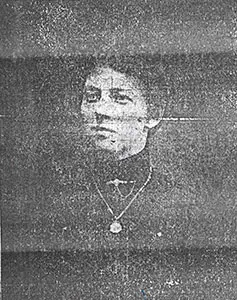
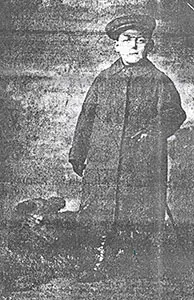
Alice and Arthur Scott
Mr. Scott emigrated from Lancashire in August, 1914, with his wife and son joining him in November. They lived with Mr. Scott’s aunt, Mrs. William Elliman of Adams Street, and Mr. Scott worked as a weaver in the Hoosic Woolen Mills. Life in Massachusetts had not agreed with Alice Scott, and her husband’s later statements were contradictory as to whether she was traveling to Nelson, Lancashire for a visit with her parents, or returning to England, permanently, in advance of her husband.
Mr. Scott and the Ellimans later recalled that on the night before she and Arthur junior departed for New York City, Alice had a nightmare in which she saw the Lusitania destroyed by fire. Her relatives took the dream lightly, and Alice’s only surviving comment on the matter was that she could only die once and was not afraid to make the trip.
Arthur Scott, “haggard, worried and tearful,” was overjoyed to see Mrs. Scott and child in an early list of survivors.
So great was the effect that the apparently good news had upon him, that he clasped his hands to his head and fell across the table at the home of his aunt, Mrs. William Elliman… when he recovered himself, overcome with joy, he heartily shook hands with everyone present…
A joy that was soon halved upon receipt of a telegram announcing that Arthur had survived and, apparently, identified his mother’s body in Queenstown. The press, and Mr. Scott, assumed that the discrepancy was the result of Alice being brought ashore alive and dying of exposure or injuries later.
Alice Scott’s death was covered, in great detail, in Hoehling’s The Last Voyage of the Lusitania. Her cabin mate, Elizabeth Duckworth, survived and gave several extended accounts of her escape from the ship. She and Mrs. Scott had gotten Arthur into one of the six starboard side boats successfully lowered, and had then boarded a boat themselves. Elizabeth became disturbed by the trouble the crew seemed to be having as they began to lower the craft, and climbed out. Alice Scott remained in the boat, and was thrown out with the rest of the passengers when one of the ropes gave way and ran through the tackles. Alice Scott never came to the surface, according to Mrs. Duckworth.
Elizabeth Duckworth took care of Arthur while he remained in Queenstown and saw to it that he was safely sent off to his grandfather, John Hay, in Nelson.
Arthur Scott, junior, died in Hamilton, Ontario, on June 19, 2001, at age 94. His whereabouts as an adult had been a mystery to researchers, and upon his death it was revealed that his Lusitania experiences were something he chose never to discuss. His own children had not known of the connection until, as adults, relatives from England doing family research contacted them.
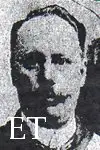 |
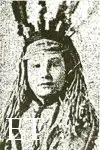 |
| Walter Tijou | Howard Tijou |
| Newsclipping, paper not identified, collection of Mike Poirier | |
Mrs. Walter Tijou, of Bromley, spent the latter half of Friday, May 7, anxiously awaiting word of her husband, Walter, and son, Howard, both of whom were returning from the United States aboard the Lusitania.
Howard Tijou had enjoyed an adventurous, and fortunate, life until that afternoon. The previous summer, while away at school in Europe, he had been trapped by the outbreak of war and, according to his mother’s account, escaped by train after his father went behind enemy lines to recover him. A few years prior to that, while accompanying his father on a business trip, he had been caught in Mexico during Pancho Villa’s revolution. He had made eleven transatlantic crossings, the last of which was the Lusitania’s westbound voyage of January 16th-23rd 1915. Now, on the return voyage, at the end of a business trip with his father, Howard’s luck ran out.
Walter Tijou returned to Bromley alone, his 43rd crossing at a tragic end. Sick from his experience, and full of regret at not finding his son before the ship sank, he spoke to the press through his wife:
The Tijous would learn that their son had been playing on deck with some other boys when the ship was torpedoed. His body was never recovered. Walter was awarded $5,000 for his injuries and $500 for lost possessions. He was advised by doctors to move to a “warm and dry climate”, so in November 1919 he moved to the United States. Walter Edgar Tijou passed away in Van Nuys, California on July 21, 1941.
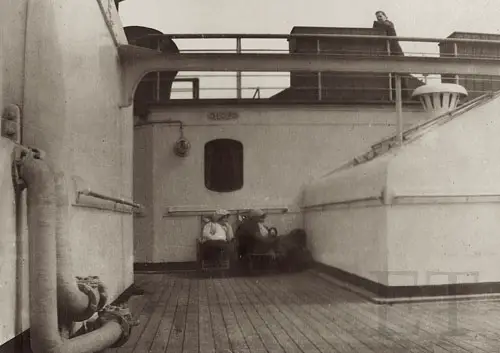 A family on the deck of the Lusitania
A family on the deck of the Lusitania
Included in the official list of the second saloon passengers on the Lusitania were the names of Mrs. Daniel MacCorkindale, her seven year old son, Duncan, and a five month old baby.
On inquiry last night at the home of her sister in law, Mrs. Frazer, Springburn, Glasgow, it was ascertained that no word had been received so far as to their safety and it is feared that they have all perished.
The loss of Mrs. MacCorkindale and her family, if confirmed, will make one of the most poignant episodes of the great tragedy. A daughter of the late Mr. Ritchie, baker, Dumbarton, Mrs. MacCorkindale was at one time a school teacher in the district, where she was well known and highly esteemed.
For the past three or four years she had been a resident near New York with her husband, who is also a native of Dumbarton. Only recently a letter had been received from her stating that she was coming home on Holiday on the Lusitania.
33 year old Elizabeth MacCorkindale, of Chromo, Colorado, and her children, Duncan and Mary, were all lost on May 7th, and none of their bodies were identified if recovered.
Friends of Daniel MacCorkindale, in New York, relayed to the press that he had enlisted in order to avenge the death of his family a few weeks after the disaster.
Samuel and Mary Jane Sharpe, of Burton, and their son, George, were one of the few families to come through the disaster intact.
Samuel Sharpe, staying with relatives on Belvedere Road, described his experiences:
We had been to America, and left Liverpool on February 18th on the Lusitania to pay a visit to my son in the states. We decided to return on the same vessel, and the whole of the voyage was uneventful until we arrived off the coast of Ireland.
Just before the vessel was struck, I was standing leaning against the gangway gazing out at the sea. Suddenly, my attention was drawn to something rising out of the water.
In appearance, it was like a whale, and when I fist sighted it, it was about 200 yards away. I did not realize that it was a torpedo until a sailor near me said “Look out, there’s a torpedo coming,” I heard it strike the forepart of the vessel with a thud, right between the first and second funnel.
I made for the second class deck, and pieces of debris began to fly up in all directions. Then I heard the second torpedo hit the Lusitania amidships, which caused it to heel right over and made it impossible to launch the boats on one side.
I shall never forget the last moments on the sinking ship. Passengers screamed, and rushed about with white faces.
There was no time to secure life belts, and I found myself in the sea amid wreckage and a number of passengers struggling for life. I looked round for my wife and son, but could see nothing of them.
Being a good swimmer, I was not sucked down in the whirlpool caused through the vessel sinking. I caught hold of a piece of wreckage, and held on. Looking around again, I was astonished to see my son come up after his immersion, and within a couple of yards of myself. He swam towards me, and clung to the raft. We then clutched hold of an airtight galvanized tank.
We remained in the water in an exhausted condition for about three hours, and were then picked up by a government patrol boat. On the boat were 53 other passengers who had been picked up, and we were all conveyed to Queenstown.
At that time I was ignorant of my wife’s fate, and I believed her to be one of the victims. I stayed at the Queen’s Hotel in Queenstown, but was too ill to go out in search of my wife. A friend, however, consented to do so, and after a careful search he discovered her at the Rob Roy Hotel.
Mrs. Sharpe recalled little about the disaster. She was pulled from the water in deep shock. She had been in her cabin and was on her way back to the deck when the explosions came. She could remember passengers running about on deck, and that she was placed into a lifeboat. One of the ropes gave way and she was hurled out with the other occupants. She had no memories at all from that point until she came to in the Rob Roy Hotel.
Samuel Sharpe died at age 63, on March 25, 1925. Mary Jane survived him by nine years, dying on May 10, 1934 at 73. George Sharpe passed away on July 1, 1978. All three died in Burton-on-Trent, England.
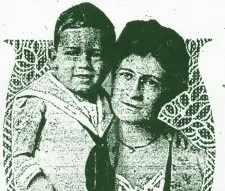 |
| Terence Florence Gray and her son, Stuart (Paul Latimer) |
Terence Florence Gray, of California, boarded the Lusitania with her son Stuart, 3, and father- in- law James Paul Gray. Mr. Gray’s wife, Carrie, was abroad, visiting the ancestral home in Scotland, and the three were to join her there for an extended vacation. James Paul Gray survived, injured, by clinging to an overturned lifeboat, but his daughter in law and grandson were lost without a trace.
The Grays later learned the details of Terence and Stuart’s final moments aboard the ship, which perhaps gave them some small comfort. Mrs. Gray and her child had at least gotten clear of the Lusitania, and were not trapped below decks when it foundered.
Terence had just put Stuart to sleep in a deck chair when the torpedo struck. She was together with her shipboard friend, Mrs. Maud Turpin, for the duration of the sinking. Presumably, they searched for their missing relatives as long as time permitted. What is known for certain is that, at the end, the two women stood with Stuart Gray on one of the upper decks and stepped into the sea together as it washed towards them. Only Maud Turpin survived; she was reunited with her husband in Queenstown, and later gave account to the Gray family.
James Paul Gray never fully recovered from the injuries he sustained in the sinking, dying in September 1922. The Mixed Claims Commission awarded his widow a settlement of $10,000.00. William Hiram Gray received $25,000.00, for the loss of his wife and son, in January 1925.
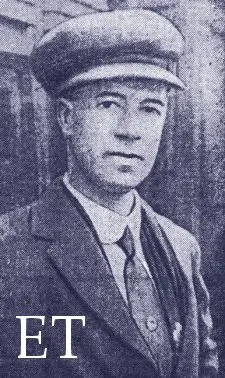 |
| Francis Luker (Daily Sketch) |
Francis Luker; Cyril, Phyllis, and Nancy Wickings-Smith
The following account, with a bizarre twist ending, details the rescue of one of the few infants to survive the Lusitania disaster. Francis Luker’s 1915 account of the disaster seems full of fanciful details, yet enough of it rings true, or corresponds to what is known from other, less flamboyant, sources to warrant inclusion:
During the voyage, I picked up with two young fellows with whom I shared a berth and all three traveled together. My two friends went below to get a nap, but I stayed on deck. About 2:30, p.m., as I was standing in the covered alleyway on the third class deck, the periscope of the German submarine was seen about 140 yards ahead. The noise of the explosion was as loud as a big gun. Smoke and steam came up from the side of the ship in clouds. The passengers all rushed over to the side of the ship to see what happened, and the lurching of the great wounded liner threw them all in a heap. Another violent lurch of the ship threw hundreds of people into the sea. I held onto a piece of iron fixed to the woodwork on the deck and was thus able to save myself from being away as the people were thrown past me.
I made my way to the second-class cabin to see if I could find a lifebelt, and, passing by the nursery, I noticed a little baby inside which had evidently been left there while the mother went to look for help, intending to come back again and fetch the child. I went forward to get hold of the child, but as I did so, the ship gave another terrific lurch and the door of the nursery was jammed tightly so that I was unable to save the child.
Unable to find a lifebelt, I made my way back to the second-class deck, where the crew were making attempts to launch some of the boats. Owing to the heavy list which the ship had taken this operation was most difficult, and the boats had to be swung so far out in order to avoid the ship, that it was most difficult to get the people into them. The first boat was too full to take me. Another was capsized through the ropes breaking so that the passengers were thrown into the sea. The boat was afterwards righted and the people were got back into it. The list of the ship was so great that I had to take a tremendous jump, which I successfully accomplished. I then grabbed a boat hook and pulled the boat in nearer to the great liner, which more passengers were able to get into it.
It was then that I managed to save Mrs. Wickings-Smith’s baby. She was trying to get into a boat with her baby, but they were holding her back, when I shouted to her to throw the baby to me, which she did. I caught the child, and handed it over to the care of some of the other occupants of the boat. I also caught another child safely, but had no idea whose it was. Mrs. Wickings-Smith was fortunately saved, but I had no idea until two or three hours later.
Before reaching land I changed boats five times, in order to leave more room for wounded passengers and women. One boat that I had got into had a defective plug and it was nearly waist deep in water. The first boat I was in was so close to the ship that they had to hold on to the wireless masts and push the wires away in order to prevent the boat being dragged down by them when the liner sank. She went down with very little suction, but when the boilers exploded, the passengers were smothered in soot and looked like n——. After the ship had disappeared, the water all round was just as if it was boiling and everybody thought that their last moments had come. However, we managed to get safely away from the whirling waters and started to render much assistance as we could to other who were still in the water.
Commander Jones was in charge of the boat in which I was finally rescued, and the boat became so full that we to refuse to take any more on board. I was able to render assistance to a lady, Miss Leipold, who escaped from the ship but had both legs injured. She came alongside the boat, and I reached out my hand to her, and for some time towed her along in this manner, afterwards having to grip her by the shoulder when she became exhausted. Eventually, they managed to make room for her in the boat by getting some of the men to lie down in the bottom.
And so things went on in this way until were sighted by a fishing smack and were taken aboard. About 100 from the different boats were got on board this vessel. After we were safely on board we could just discern smoke of the other vessels, which were coming to our assistance. We remained on the trawler for about an hour during which time the sailors did everything they possibly could for our comfort, attending to the wounded and giving them whiskey, etc… We were then transferred to the paddle-steamer Flying Fish and taken to Queenstown. We arrived at Queenstown about 11:30 pm or nine hours after the Lusitania sank.
Luker returned to Saskatoon by way of New York City, aboard the Orduna, in mid-September, 1915. He resumed his job as a letter carrier, and for the next two years lived quietly. He did not marry, and had no immediate family in Canada. His tragic end was such that decades later it was featured in a New York City newspaper profile. If ever a death can be deemed ironic, Francis Luker’s certainly was:
After being fortunate enough to be rescued from the ill-fated Lusitania, F.J. Luker, a post office letter carrier in Saskatoon, was drowned within a few minutes after entering the Saskatchewan River yesterday afternoon.
Luker, at the time of the torpedoing of the Lusitania, was in the cold water of the ocean for about two hours, but on this occasion, he never came to the surface after he dove.
About five minutes before 5 o’clock yesterday afternoon, Luker came to The section of the riverbank below the power house, where a few boys and Henry A. Berger, 220 Ave., D, N., were swimming. He questioned Berger about the condition of the water and was told it was fine. Berger said he saw him dive and when he never came up within a few minutes he became anxious.
Berger sent some of the boys for police assistance and proceeded to dive for an endeavour to locate the body, but was not successful. In about 25 minutes, Sgt of Police Macintosh located the body. Doctor John A. Valens was on the scene, but Luker was beyond assistance.
During an interview, Berger stated that it was his opinion that Luker was drowned by falling into a hole in the river bed containing weeds. Coroner John A. Valens decided that an inquest was not necessary and attributed the cause of death to drowning owning to cramps. Instructions regarding burial are being awaited from England.
Phyllis Wickings-Smith was an exceptionally fortunate woman, by Lusitania standards; both her husband and her daughter, Nancy Eileen, were saved. The Wickings-Smith party was comprised of Cyril Wickings-Smith, his wife Phyllis, their daughter Nancy, and his brother Basil. Basil was lost in the disaster. It is known, from the Prichard letter collection (Imperial War Museum) that Basil had managed to go below decks for life preservers without being trapped. One of his lifebelts was given to Mrs. Gertrude Adams.
Phyllis lived less than five years after the Lusitania tragedy, dying January 19, 1920. Cyril, her husband, died just short of the 50th anniversary, on April 3, 1965. Nancy Wickings-Smith Woods, the infant saved by Francis Luker, lived until May 1993.


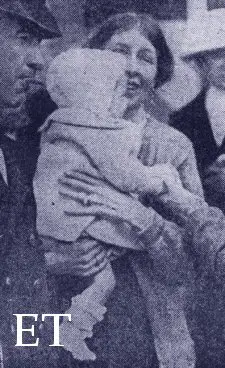
Left: Cyril Wickings-Smith, middle : Phyllis Bailey Fenn (Courtesy of Richard Woods); right: Mrs. Phyllis Wickings-Smith and her daughter Nancy
Edward Harris Lander was born on November 23, 1882 in Glen Ochil, Scotland to an Irish father and an English mother. The family settled in Bristol, England in 1901, from where Robert emigrated to the Untied States ca. 1907. He met and married a woman named Christine in Chicago; they had one son, Robert. They lived in New York where he worked as the U.S. representative of a London firm.
Lander’s 1915 trip abroad, which began with a crossing aboard Lusitania, combined business and pleasure, for he planned to visit his family in Bishopston, Bristol. He made the acquaintance of Elizabeth Rogers and her sister, Sarah Fish, during the crossing. Mrs. Fish was bringing her three daughters back to England for the duration of the war, while her husband, Joseph, served in the Canadian Expeditionary Force. Mrs. Fish’s daughters were Eileen, age 10, Marion, age 8, and Joan, about 6 months. Mrs. Fish recalled that there was much banter regarding the German warnings, for no one she met took them seriously.
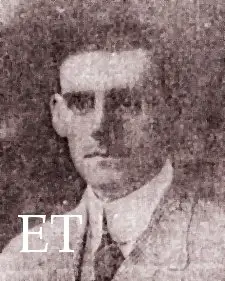 |
| Edward Harris Lander (Michael Poirier) |
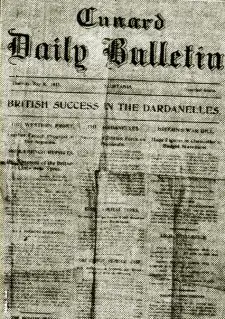 |
| Cunard Daily Bulletin May 6 1915 |
On the day of the sinking, Edward Lander and Elizabeth Rogers finished their lunch and went for a walk on deck with baby Joan. Sarah Fish continued to dine with her middle child, Marion, while Eileen played on deck. Lander was standing by the rail with his friend when someone turned his attention to the wake of the torpedo:
The missile headed straight for the Lusitania, and hit her about mid ship. Someone cried out, ‘It’s got us,’ and upon contact with the vessel, the torpedo exploded with a dull sound, not making a big racket. We saw a big cloud of smoke; the engines of the Lusitania stopped, and the vessel took a list to starboard.
[Authors’ note: Although Lander said the ship listed to starboard, he claimed that he saw a torpedo strike from the port side.]
We crawled onto the first cabin deck and with many others with us, and soon there was lot of water on part of the deck.
I gripped the baby and held the young lady by the wrist, and we managed to scramble to the deck where the boats were. That deck seemed pretty clear. The lady and I found a lifeboat, into which we got, and I kept the baby in my arms. The boat was crowded with members of the crew, so there was not much room to turn round in her. Then somebody came alongside and said, ‘It is all right. She’s on the bottom.’ Thinking it safe to return to the ship, we all got off our boat and again went aboard the Lusitania.
Doubt arose to the safety of the ship and people began to get into the boat again. Suddenly, the Lusitania sank. Our boat was attached to her by a rope, and we went down with the steamship. The baby was wrenched out of my arms and it seemed, in going down into the sea, as if I turned over and over again. Then I felt myself coming up again. I came to the surface, but sank once more. Coming up a second time, I struck out a little and saw an over turned lifeboat a little way off. One man was on it. I reached her, and getting on her, lay for a little while. I was very nearly unconscious.
When I recovered somewhat we saw a woman’s dress in the sea- merely the back of the garment was showing. The man in the boat got hold of the woman’s head and I held on to her clothes, and we pulled her on to the flat bottom of the overturned lifeboat with us.
Soon after, we saw a collapsible lifeboat, with six men on her- members of the crew, I believe. Her side was stove in, but she kept afloat. We hailed her; she came to us and they took us aboard. I was shivering greatly, and one fellow who seemed in command, told us to take an oar. The pulling worked up a little circulation and made one feel better. Then, someone else took a turn at pulling and I was put back on the bottom of the upturned lifeboat again. There were many people floating around, and we saw two men and a woman hanging on to a tank boat. Those were afterwards rescued by the collapsible boat.
The lifeboat on which I was allowed to drift for a time and for a time was secured to the collapsible by a rope. Boats dotted the sea, and hope was raised by a little fishing smack that could be seen off the Irish coast. There was not much wind, however, and the smack went towards the coast instead of coming to us. Possibly she had as many people aboard as she could take. There were lots of deck chairs floating around, but we saw only one that as being used as means of support and that by a woman who also had a lifebelt. Then we arranged to cry ‘Help’ in chorus. H.M.S. Bluebell, a government tug or patrol boat, came to our assistance…
Eileen Fish headed for for the second-class companionway at once, when the Lusitania was torpedoed. She met her mother and sister, despite the confusion, and the three made their way back on deck. A stranger came along and handed Sarah a lifebelt, which she gave to Eileen. Eileen would not take the lifebelt away from her mother, so the stranger gave Sarah his own belt, allowing each woman to have one. The three stood waiting together until the Lusitania foundered, and were dragged under as she did. Sarah held onto Marion until they reached the surface. She could not see Eileen.
Sarah spotted a boat in the distance, but when it approached, its occupants claimed that they were full and could not take in Mrs. Fish or her daughter. An oar floated by and Sarah placed it under Marion’s arms. A little while later, the occupants of the lifeboat relented and took the mother and daughter aboard.
Marion appeared to be dead, and the people in the boat said she must be put overboard. However, Sarah was proficient in artificial respiration and worked for over an hour until Marion revived. Sarah and Marion Fish were eventually transferred to a collapsible, where they found Eileen.
Eileen swam to the collapsible after the Lusitania, and latched on to a lady’s cape that was hanging over the side. She held on until she was pulled aboard.
Elizabeth Rogers remembered little of her time in the water. She said she went down and down, and to her surprise came back up despite the heavy coat she was wearing.
Sarah Fish was very grateful to Edward Lander for his attempt to save Joan, but he never forgot the child’s death. He booked passage on the Saxonia and returned to his family.
Landers’ experiences on the Lusitania did not deter him from traveling and he continued to sail. The Lander family eventually settled in Wa Keeney, Kansas. Edward referred to the Lusitania infrequently and never at length. He did keep one memento; the May 6, 1915 Cunard Daily Bulletin that was in his pocket when he went overboard. Edward Lander passed away on January 31, 1973 at age 90.
Marion Fish Whiting, 47, died from the effects of cirrhosis, in Bathavon, England, on June 1, 1954. Sarah Fish died at age 73, in Bridgewater, England, on October 24, 1955. Eileen Fish, 78, died on November 12, 1983, in Wandsworth, England.
A Rutherglen Victim
Mr. Thomas Brownlie, whose mother resides in Castle Street, Rutherglen, and his wife were passengers on the Lusitania. Mr. Brownlie had been at Winnipeg for about eight years. Some time ago he came home on holiday and married a Rutherglen lady.
Mr. and Mrs. Brownlie had made up their minds to return to the old country in consequence of the bad state of trade in Canada. They booked passage on the Lusitania, and duly sailed from New York.
At the time of the disaster, both were on deck. The excitement was intense, and everyone rushed for lifebelts. Mrs. Brownlie was supplied with one, and while her husband was searching for another one for himself the ship gave a lurch and Mrs. Brownlie was thrown into the sea. She kept afloat but became unconscious, and when she regained her senses she was in one of the rescue boats. Her husband was never seen again, and it is concluded that he perished.
Mrs. Brownlie arrived in Rutherglen yesterday in a complete state of nervous prostration.
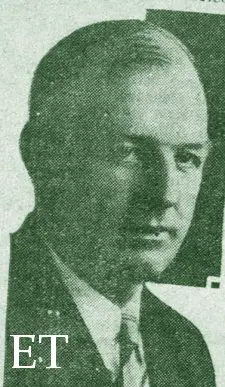 |
| John Moore |
John Moore was born in Belfast, Ireland and was one of six children. He and his siblings grew up on a farm in Ballylesson above the river Lagan. He worked as a grocery store clerk as a young man, and was well known in the area as a football player. Mr. Moore decided to emigrate to America, at age 19.
He booked passage on the Lusitania, and settled in Manchester, Connecticut. His sister, Jeanette, also known as Nettie, moved to Newark, New Jersey shortly thereafter with her new husband, Walter Mitchell.
John learned out that the Mitchells were going back to Ireland in 1915, and he decided to join them for the visit. They booked second-class passage on the Lusitania.
A few details of their time on the ship have survived. The Mitchell family and John Moore sat together during meal times, and Mr. Moore and some shipboard friends frequently played cards to pass time during the voyage. Moore finished lunch on the day of the disaster, and went to continue the card game. When the ship was struck, he put the score sheet in his pocket and hurried on deck. He said that from the outset he felt that the ship was doomed, and that many of the passengers he encountered were hysterical. He watched a boat being lowered, and the line jammed in the block. The boat overturned and sent its occupants into the water. Looking about, he saw a partially filled boat and jumped in. He heard a “sickening snap” and the line in the block parted. The boat swung crazily from the forward davit as the aft part of the boat dropped down. John clutched at the gunwale as the people and equipment from the boat fell into the sea.
People jumping from the deck hit him, as he clung to the rope, but he managed to hold on. He moved hand over hand up the rope until he gained the boat deck of the Lusitania. A lifebelt was lying on deck and he put it on. The ship suddenly dived and he found himself in the water.
John was swimming blindly when he came across a young boy crying, “Save me!” He placed the child’s arms around his neck and swam towards an overturned boat. They clung to the craft as people dropped off. None of Moore’s newspaper accounts name the boy, or say if he survived.
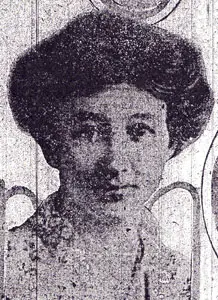
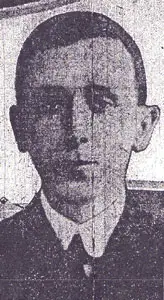
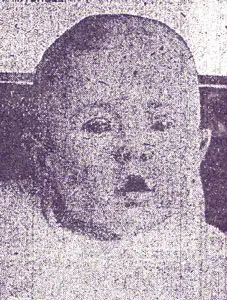
Jeanette Mitchell, Walter Dawson Mitchel and Walter Dawson Mitchel jr.
John Moore was eventually taken aboard the Indian Empire. He claimed to have met his sister aboard the rescue ship in some accounts, while in others he said that he found her unconscious in Queenstown. His brother-in-law and nephew perished in the disaster: a photo of the body of Walter Dawson Mitchell, Junior, appeared in the press soon after.
Moore remained with his family for a few months before booking passage back to Connecticut, aboard the Carpathia. They were off the Irish coast, on Sunday, July 18th, when a periscope was sighted. The British patrol fired at the submarine. Joseph Thompson, another Lusitania survivor who happened to be aboard that voyage said that the Carpathia continued on a zig-zag course until after dark. John had very specific memories of his voyage home. “I also nearly escaped sinking on a coast vessel crossing to Liverpool from Belfast and, believe it nor not, another sub tackled the Carpathia on which I was returning to America. We sank the submarine with six shots.” Captain Prothero of the Carpathia stated that he thought the patrol were at target practice, not firing at a submarine.
John Moore worked as a meter tester, and married in 1924. He was interviewed by a reporter in the 1930s. Moore owned his own home and said that he felt he was doing well in life. He saved the Cunard Daily Bulletin, dated May 6, 1915, that he carried off the ship with him and over the years showed it to anyone who was interested. The headline- “British Success in the Dardanelles.” He passed away on May 27, 1946 at age 54.
Jeanette Mitchell eventually remarried, to a man named William D. Watters. She lived in the Ravenhill area of Belfast, and died on January 19, 1966.
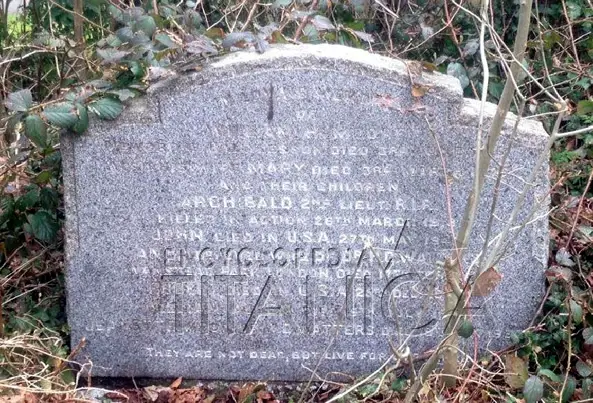
Grave of Jeanette Mitchell Watters
Courtesy of Gavin Bell

